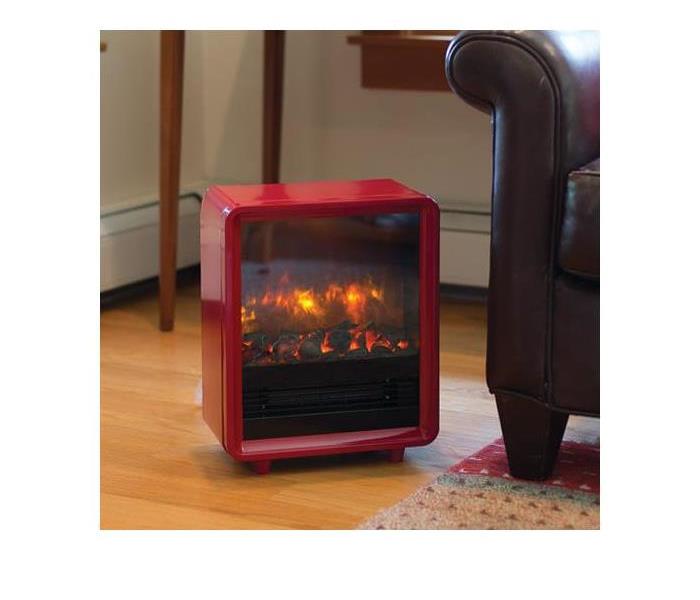Archived Blog Posts
Mold In Crawl Spaces
2/1/2023 (Permalink)
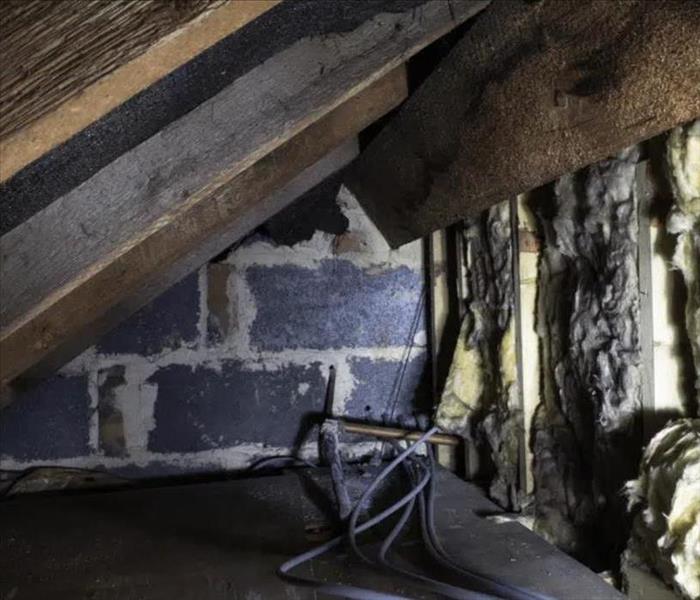 Mold in your crawl space?
Mold in your crawl space?
What Causes Mold in a Crawl Space?
Excessive moisture can cause mold growth in your crawl space. That moisture can occur naturally from the soil and dirt underneath your home. A leaky pipe or condensation can also contribute to higher moisture levels. Without proper ventilation, moisture can build up and cause mold growth.
6 Ways to Prevent Mold Growth in Your Crawl Space
You can be proactive and prevent mold growth by taking a few precautionary steps. We’ve included six tips that can help avoid mold from forming in the first place.
Tip 1: Inspect your foundation walls.
The first step in crawl space mold prevention is to inspect the foundation walls. Look for cracks or leaks in walls, as well as holes or cracks in the ceilings. Even the smallest gap can allow moisture to seep in.
Tip 2: Check your gutters and downspouts.
You want to make sure to channel rainwater away from your house properly. If it’s flowing toward your home, then it’s a surefire recipe for mold. Ideally, you should direct water flow at least six feet from your home to prevent rainwater from pooling at or near your foundation.
Tip 3: Look for any leaks.
You might have to get your hands dirty for this one, but we recommend checking your crawl space two to three times per year. Inspect the pipes to ensure that none of them are leaking. You should also look for any plumbing leaks above ground too. Since water travels downward, a leak upstairs can easily make its way into your crawl space.
Tip 4: Insulate crawl space pipes.
Earlier, we mentioned that condensation collecting on pipes from fluctuating temperatures could elevate moisture levels in your crawl space, leading to mold. One way to prevent this from happening is to insulate the pipes.
Tip 5: Consider a vapor barrier.
Vapor barriers are unique materials that keep moisture out of your crawl space. Vapor barriers are made of a plastic or foil sheet designed to resist water through the floor, ceiling, wall, or roof. They prevent both the invasion of moisture and the condensation on surfaces.
If you already have a vapor barrier (also referred to as crawl space encapsulation), ensure you remove the original barrier to prevent odor or moisture from being trapped between the two layers.
Tip 6: Adequately ventilate your space.
Good ventilation airs out your crawl space, and in conjunction with a vapor barrier, is very effective in keeping everything perfectly dry. There are multiple ways to ventilate the area, such as:
- Divert a minimal amount of heated air from your HVAC system to the crawl space.
- Install a dehumidifier. Humidity levels shouldn’t be above 30-50%.
- Install an exhaust fan to move crawl space air outside.
- If you have a clothes dryer in your home, ensure the vent flows outside the crawl space.
Preparing for a Winter Storm
1/2/2023 (Permalink)
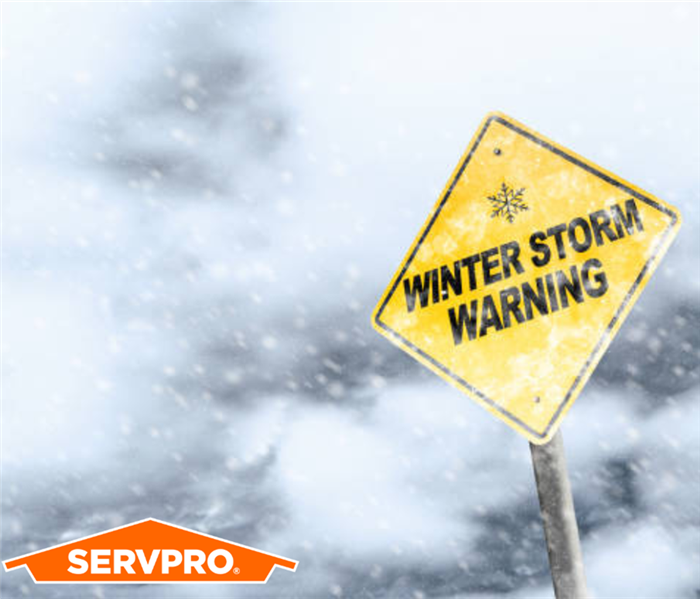 To keep yourself and your loved ones safe, you should know how to prepare your home and your car before a winter storm hits.
To keep yourself and your loved ones safe, you should know how to prepare your home and your car before a winter storm hits.
Make a Plan
Be prepared before a winter storm hits by planning ahead. If you are in an area prone to winter weather, be sure to create a communication and disaster plan for your family ahead of time.
Weatherproof your home.
- Insulate any water lines that run along exterior walls so your water supply will be less likely to freeze.
- Caulk and weather-strip doors and windows.
- Insulate walls and attic.
- Install storm or thermal-pane windows or cover windows with plastic from the inside.
- Repair roof leaks and cut away tree branches that could fall on your home or other structure during a storm.
Have your chimney or flue inspected each year.
If you plan to use a fireplace or wood stove for emergency heating, have your chimney or flue inspected each year. Ask your local fire department to recommend an inspector or find one online.
Featured ResourceCheck out our infographic, Be Ready! Winter Weather for tips on getting your family, home, and car ready for a winter storm.
pdf iconMore >Install a smoke detector and a battery-operated carbon monoxide detector.
- If you’ll be using a fireplace, wood stove, or kerosene heater, install a smoke detector and a battery-operated carbon monoxide detector near the area to be heated. Test them monthly and replace batteries twice a year.
- Keep a multipurpose, dry-chemical fire extinguisher nearby.
- All fuel-burning equipment should be vented to the outside.
- Each winter season have your furnace system and vent checked by a qualified technician to ensure they are functioning properly.
For older adults, keep an easy-to-read thermometer inside your home.
If you or a loved one are over 65 years old, place an easy-to-read thermometer in an indoor location where you will see it frequently. Our ability to feel a change in temperature decreases with age. Older adults are more susceptible to health problems caused by cold. Check the temperature of your home often during the winter months.
Create an emergency car kit.
It is best to avoid traveling, but if travel is necessary, keep the following in your carexternal icon:
- Cell phone, portable charger, and extra batteries
- Items to stay warm such as extra hats, coats, mittens, and blankets
- Windshield scraper
- Shovel
- Battery-powered radio with extra batteries
- Flashlight with extra batteries
- Water and snack food
- First aid kit with any necessary medications and a pocket knife
- Tow chains or rope
- Tire chains
- Canned compressed air with sealant for emergency tire repair
- Cat litter or sand to help tires get traction, or road salt to melt ice
- Booster cables with fully charged battery or jumper cables
- Hazard or other reflectors
- Bright colored flag or help signs, emergency distress flag, and/or emergency flares
- Road maps
- Waterproof matches and a can to melt snow for water
Christmas Tree Safety Tips
12/5/2022 (Permalink)
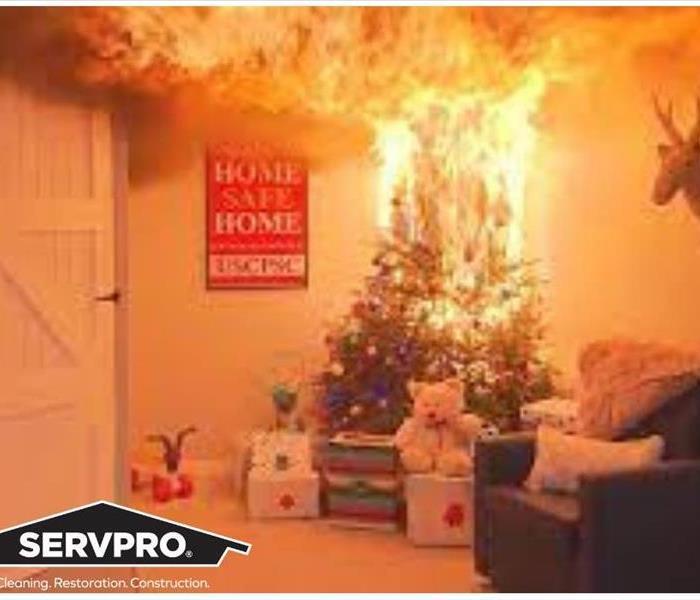 Christmas Tree Myth: A Christmas Trees is a fire hazard.
Christmas Tree Myth: A Christmas Trees is a fire hazard.
Safety Tips
Use of lights that produce low heat, such as miniature lights, will reduce drying of the tree.
Always inspect light sets prior to placing them on the tree. If worn, replace with a new set.
Do not overload electrical circuits.
Always turn off the lights when leaving the house or when going to bed.
Monitor the tree for freshness. After Christmas or if the tree is dry, remove it from the house.
Find a recycling program near you.
Never burn any part of a Christmas Tree in a wood stove or fireplace.
Provided by the National Christmas Tree Association: It's that time of year again. We'll all probably see the local TV news team do a Christmas Tree fire story. It'll show a dramatic image of a tree burning and the reporter will say with consternation, "If you get a Real Christmas Tree, this could happen to you….blah blah blah.”
Watching those stories every year, I can only wonder at the ethical standards of the TV station. This is clearly an example of sensational and misleading journalism. While I applaud efforts to teach people how to properly care for their farm-grown Christmas Tree and warn people about potential fire hazards, journalists have a responsibility to get the facts right.
A natural tree, especially a tree that is kept watered, is extremely difficult to ignite from an accidental ignition source found in a home. In fact, newspapers, magazines, boxes, bags and drapes are far more likely to be involved in a fire, but mentioning these before natural trees would still “miss the mark.” Media focus should be on the source of the fire in the first place. Educating the public about unattended or poorly placed candles, overloaded circuits and faulty wiring should be your priority. A cut Christmas Tree has NEVER, ever, ever in history CAUSED a fire. Fires are caused by sparks, flames, heat or chemical reactions. A plant (which is what a Christmas Tree is) can NOT cause a fire.
According to published reports of the National Fire Protection Association, a confirmed average of 111 fires per year in the U.S. were ones in which a cut tree was the first item ignited in a residential fire. During the same period of the report, an average of 28 million cut Christmas Trees were displayed. Divide 111 by 28 million. You get 0.0000039. Or 0.0004% rounded up. But watching local news reports on the topic, one would think it happened all the time.
Another item in the NFPA report you might find interesting is that fire officials state clearly that artificial trees also catch on fire every year. There is no testing lab or standards for those products to meet in order to print the words "flame retardant" on their packaging. They're really just words on a box. Fake trees catch on fire every year. Not very many, just like farm-grown trees. However, according to the NFPA report, 28% confirmed residential fires where a Christmas tree was the first item ignited involved a fake tree.
I hope these journalists realize just how erroneous and misleading and dramatized their stories like this are, and how scaring people with dramatic images of trees burning doesn't help to constructively provide tree care tips. It only hurts local farmers who grow the trees. Media stories that exaggerate the danger of a consumer item – or worse yet media stories that intentionally fake an event such as pouring gasoline over a Real Christmas Tree to demonstrate its flammability – can influence consumer behavior in a way that is unfair and unfortunate. It is journalistic sensationalism and does a disservice to the public and the product. Don't think they fake it? Just a few years ago, on The Tonight Show, Jay Leno showed a clip of a fireman pouring four gallons of gas on a tree just prior to doing one of those "this could happen to you" Christmas Tree fire stories for local TV news.
My hope is that consumers are not fooled by media who show these news reports. You can get the facts, including proper tree care practices, at www.realchristmastrees.org Have a safe and Merry Christmas!
Space Heater Safety Tips
12/2/2022 (Permalink)
 On average, fires caused by portable heaters cause 65 deaths and 150 injuries a year.
On average, fires caused by portable heaters cause 65 deaths and 150 injuries a year.
Heating equipment is the second leading cause of home fires in the United States. More than 65,000 home fires are attributed to heating equipment each year. These fire result in hundreds of deaths, thousands of injuries and millions of dollars in property damage.
Portable electric space heaters can be a convenient source of supplemental heat for your home in cold weather. Unfortunately, they can pose significant fire and electric shock hazards if not used properly. Fire and electrical hazards can be caused by space heaters without adequate safety features, space heaters placed near combustibles, or space heaters that are improperly plugged in.
Safety should always be a top consideration when using space heaters. Here are some tips for keeping your home safe and warm when it’s cold outside:
- Make sure your space heater has the label showing that it is listed by a recognized testing laboratory.
- Before using any space heater, read the manufacturer’s instructions and warning labels carefully.
- Inspect heaters for cracked or broken plugs or loose connections before each use. If frayed, worn or damaged, do not use the heater.
- Never leave a space heater unattended. Turn it off when you’re leaving a room or going to sleep, and don’t let pets or children play too close to a space heater.
- Space heaters are only meant to provide supplemental heat and should never be used to warm bedding, cook food, dry clothing or thaw pipes.
- Install smoke alarms on every floor of your home and outside all sleeping areas and test them once a month.
- Proper placement of space heaters is critical. Heaters must be kept at least three feet away from anything that can burn, including papers, clothing and rugs.
- Locate space heaters out of high traffic areas and doorways where they may pose a tripping hazard.
- Plug space heaters directly into a wall outlet. Do not use an extension cord or power strip, which could overheat and result in a fire. Do not plug any other electrical devices into the same outlet as the heater.
- Place space heaters on level, flat surfaces. Never place heaters on cabinets, tables, furniture, or carpet, which can overheat and start a fire.
- Always unplug and safely store the heater when it is not in use.
Tips for cooking with a fryer without causing a dangerous fire this Thanksgiving
11/14/2022 (Permalink)
Thanksgiving is a time for family and holiday traditions including taste tested, Thanksgiving recipes. It's also a time where family members may want to join in the food preparation so fire safety is important. With the speed of deep-frying a turkey, the irresistible flavor, and juiciness that results, turkey frying has become a Thanksgiving tradition for some. But turkey fryers have the potential to cause fire and serious injury, which is why organizations like Underwriters Laboratories and the National Fire Protection Association advises against using them. If you plan to deep-fry your holiday bird, be sure you know how to safely use the fryer, and take these precautions to protect yourself, your guests and your home.
Tips to help prevent deep fried turkey accidents
- Keep outdoor fryers off decks, out of garages and a safe distance away from trees and other structures.
- Make sure the turkey is thawed and dry before cooking. Ice or water that mixes into the hot oil can cause flare-ups.
- Watch the weather. Never operate a fryer outdoors in the rain or snow.
- Place the fryer on a level surface, and avoid moving it once it's in use.
- Leave 2 feet between the tank and the burner when using a propane-powered fryer.
- Follow the manufacturer's instructions to avoid overfilling. Oil can ignite when it makes contact with the burner.
- Choose a smaller turkey for frying. A bird that's 8 to 10 pounds is best; pass on turkeys over 12 pounds.
- Never leave fryers unattended.
- Purchase a fryer with temperature controls, and watch the oil temperature carefully. Cooking oil that is heated beyond its smoke point can catch fire. If you notice the oil is smoking, turn the fryer off.
- Turn off the burner before lowering the turkey into the oil. Once the turkey is submerged, turn the burner on.
- Wear goggles to shield your eyes, use oven mitts to protect your hands and arms and keep an "ABC" or grease-rated fire extinguisher close by. Do not use water or a garden hose on a fire related to turkey fryers.
- Skip the stuffing when frying turkey, and avoid water-based marinades.
- Keep children and pets away from the fryer at all times.
- Once finished, carefully remove the pot from the burner, place it on a level surface and cover to let the oil cool overnight before disposing.
- Opt for an oil-less fryer. This uses infrared heat, rather than oil, to cook the turkey.
After your turkey is prepared, remember these Thanksgiving food safety tips to help ensure your family has a safe, enjoyable holiday
Ideas on how to prevent pipes from freezing
11/7/2022 (Permalink)
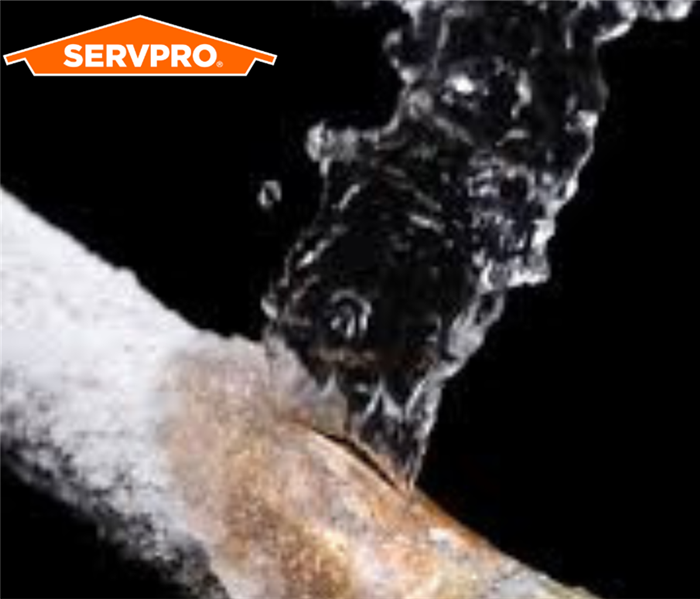 Freezing and Bursting Pipes Due to Cold Temperatures
Freezing and Bursting Pipes Due to Cold Temperatures
Frozen pipes could be a big problem and can be prevented.
In addition to conducting regular winter home maintenance, protecting pipes from freezing is important. Even a tiny crack in a pipe can spew hundreds of gallons of water causing flooding, damage to your furnace and serious structural damage. It also presents an immediate potential for mold.
Frozen water pipes are a problem in both cold and warmer climates, affecting families each winter. It can occur in homes with both plastic and copper pipes. By taking the preventative measures below, you may help reduce the risk of frozen water pipes and the resulting property damage.
Tips to help prevent pipes from freezing
The three central causes of frozen pipes are quick drops in temperature, poor insulation and thermostats set too low. You can prepare your home during the warmer months.
- Insulate pipes. Pipe insulation in your home's crawl spaces and attic helps even if you live in a climate where freezing is uncommon. Exposed pipes are most susceptible to freezing. Remember, the more insulation you use, the better protected your pipes will be.
- Use heat tape or heat cables. Heat tape or thermostatically controlled heat cables can be used to wrap pipes. Be sure to use products approved by an independent testing organization, such as Underwriters Laboratories Inc., and only for the use intended (exterior or interior). Closely follow all manufacturer's installation and operation instructions.
- Seal leaks. Locate and thoroughly seal leaks that allow cold air inside. Look for air leaks around electrical wiring, dryer vents and pipes, and use caulk or insulation to keep the cold out.
- Secure outdoor hoses, valves and faucets. Before winter hits, disconnect garden hoses and, if possible, use an indoor valve to shut off and drain water from pipes leading to outside faucets. This reduces the chance of freezing in the short span of pipe just inside the house.
- Let water drip. A trickle of hot and cold water might be all it takes to keep your pipes from freezing. Let warm water drip overnight when temperatures are cold, preferably from a faucet on an outside wall.
- Adjust the thermostat. Keeping your thermostat set at the same temperature during both day and night also reduces the risk of frozen pipes. During extreme cold, this also helps reduce the strain on the furnace.
- Open cabinet doors. This allows heat to get to un-insulated pipes under sinks and appliances near exterior walls.
5 Signs of Moisture Damage in Your Home
11/1/2022 (Permalink)
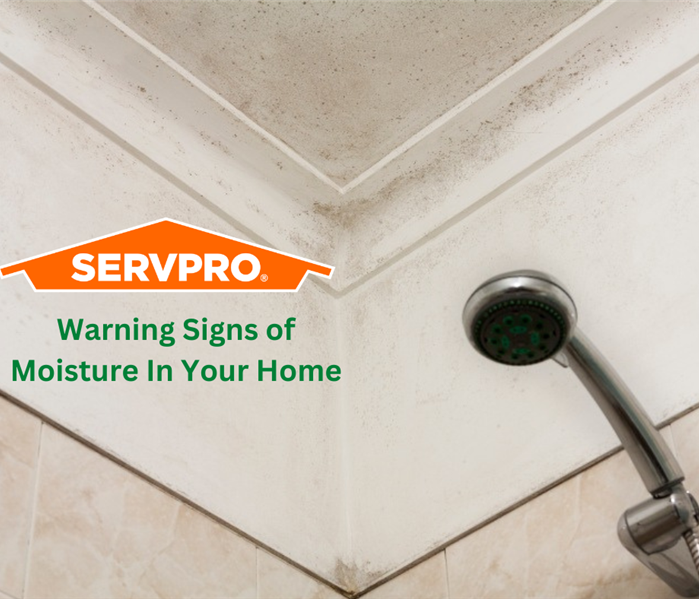 The professionals at SERVPRO are always available for a moisture damage estimate!
The professionals at SERVPRO are always available for a moisture damage estimate!
Throughout the years of providing water damage restoration services, we have found that moisture damage is common in many Atlanta homes without homeowners' awareness. Moisture damage can cause many problems in a home, including permanent structural damage. Therefore, identifying the five most common signs of moisture damage early on is essential to protect your home and prevent future issues.
The five common signs of moisture damage are:
- Water stains or discoloration on walls, ceilings, or floors
- Peeling paint or wallpaper
- Growth of mold or mildew
- Warping or buckling of floors, walls, or ceilings
- Bug infestation If you have any questions or want immediate water damage assistance, get in touch with SERVPRO of Mayes and Wagoner Counties. We are always here to help!
What is moisture damage?
Moisture damage is any water-related damage that can occur in your home, including damage caused by a leaky roof, a broken pipe, or flooding. If left untreated, moisture damage can cause permanent structural damage to your home and other significant problems.
The five most common signs of moisture damage
Now that you are familiar with what moisture damage is, let's take a closer look at the five most common signs that moisture damage has occurred in your home.
1) Water stains or discoloration on walls, ceilings, or floors
One of the most common signs of moisture damage is water stains or discoloration on walls, ceilings, or floors. If you notice any water stains in your home, it's crucial to investigate the cause and take steps to fix the issue. In addition, leaks usually cause water stains, so it's essential to find and repair the source of the leak as soon as possible.
2) Peeling paint or wallpaper
Another common sign of moisture damage is peeling paint or wallpaper. If you notice that the paint or wallpaper in your home is peeling, it's a good idea to check for moisture damage. Peeling paint or wallpaper can be caused by high humidity levels, so it's crucial to ensure that your home is well-ventilated.
3) Mold or mildew growth
Mold and mildew growth is another common sign of moisture damage. If you notice mold or mildew in your home, it's essential to take steps to remove it and prevent it from coming back. Mold and mildew can cause serious problems, so ensuring your home is clean and moisture-free is essential.
4) Warping or buckling of floors, walls, or ceilings
Warping or buckling floors, walls, or ceilings are another common sign of moisture damage. If you notice any warping or buckling in your home, it's crucial to investigate the cause and take steps to fix the issue.
5) Bug infestation
A common sign of moisture damage is a bug infestation. If you notice bugs in your home, it's essential to take steps to remove them and prevent them from coming back. Bugs are attracted to moisture, so it's vital to ensure that your home is clean and free of moisture.
Preventing moisture damage
As you can see, moisture damage can cause many problems in your home. Keeping your home dry and well-ventilated is essential to prevent moisture damage. Some tips for preventing moisture damage include:
- Fixing any leaks in your home as soon as possible.
- Checking for moisture regularly and taking steps to dry wet areas.
- Ventilating your home to reduce moisture buildup.
- Using a dehumidifier to control humidity levels.
- Keep gutters clean and free of debris.
The professionals at SERVPRO of Mayes and Wagoner Counties can help combat moisture damage
We covered a lot of information on moisture damage, including the common signs that moisture damage has occurred in your home. Those common signs are:
- Water stains or discoloration on walls, ceilings, or floors
- Peeling paint or wallpaper
- Growth of mold or mildew
- Warping or buckling of floors, walls, or ceilings
- Bug infestation
We also discussed ways to prevent moisture damage in your home because prevention is the number one best way to keep moisture damage from happening. However, if moisture damage occurs in your home, don't hesitate to contact SERVPRO of Mayes and Wagoner Counties.
SERVPRO of Mayes and Wagoner Counties is an IICRC accredited firm, and our team of professionals has the training and experience necessary to help you combat moisture damage. We are available 24/7, 365 days a year, so don't hesitate to contact us.
Fire Damage Restoration Process
11/1/2022 (Permalink)
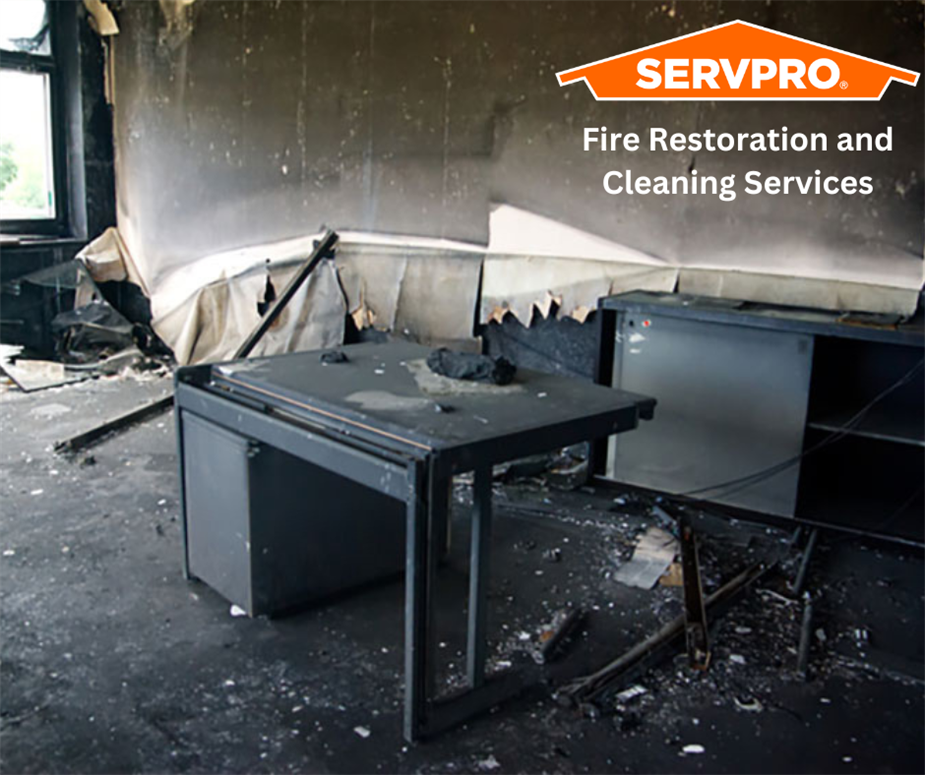 Fire Restoration and Cleaning Services
Fire Restoration and Cleaning Services
Call SERVPRO 24/7 in Mayes and Wagoner Counties for Fire Damage Cleanup and Restoration Services
After the fire trucks leave, your home likely suffers from fire and smoke damage and extensive water damage from firefighting efforts. SERVPRO® has the specialized fire restoration training needed to restore your home to pre-fire condition.
Every fire damage event is a little different, and requires a unique solution, but the general process stays the same. The steps listed below illustrate our process for the “typical” fire damage emergency.
Step 1: Emergency Contact
The restoration process begins when you give us a call. Our specialist will ask a series of questions regarding the fire damage event that will help us arrive quickly with the appropriate equipment and resources.
Step 2: Inspection and Fire Damage Assessment
We will carefully inspect and test adjoining rooms of your property to determine the extent of the fire, smoke, and soot damage. This step is crucial to developing a plan of action.
Step 3: Immediate Board-Up and Roof-Tarp Service
Fire damage can often compromise windows, walls, and roofs. To maintain security and to protect against further damage, SERVPRO can board up missing windows and walls and place tarps on damaged roofs.
Step 4: Water Removal and Drying (if water damage is present)
The water removal process begins almost immediately and removes the majority of the water. We will then use dehumidifiers and air movers to remove the remaining water and complete the drying process.
Step 5: Removal of Smoke and Soot from All Surfaces
SERVPRO uses specialized equipment and techniques to remove smoke and soot from ceilings, walls, and other surfaces.
Step 6: Cleaning and Sanitizing
We will clean all of the restorable items and structures that were damaged by the fire. We use a variety of cleaning techniques to restore your belongings to pre-fire condition. We’re also trained to remove odors using industrial air scrubbers and fogging equipment.
Step 7: Restoration
Restoration is the final step—getting your home or business to its pre-fire condition. Restoration may involve minor repairs, such as replacing drywall, painting, and installing new carpet; or it may entail major repairs such as the reconstruction of various areas or rooms in a home or business.
An Escape Route Could Save Your Life During a Fire
7/25/2022 (Permalink)
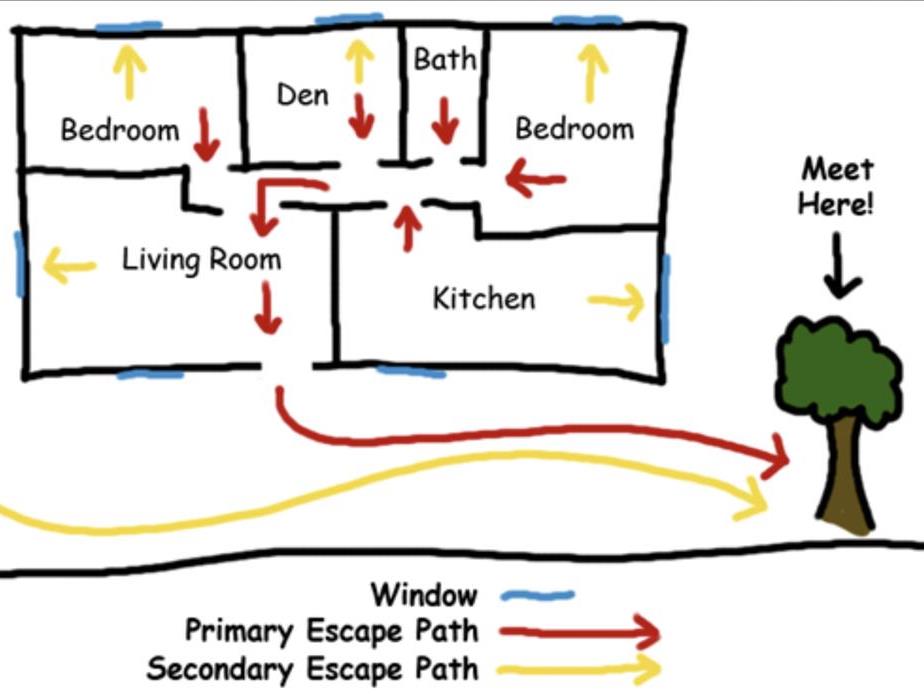 Do you have a fire escape plan at home?
Do you have a fire escape plan at home?
Escape planning tips
- Pull together everyone in your household and make a plan. Walk through your home and inspect all possible exits and escape routes. Households with children should consider drawing a floor plan of your home, marking two ways out of each room, including windows and doors. Also, mark the location of each smoke alarm.
- A closed door may slow the spread of smoke, heat and fire. Install smoke alarms in every sleeping room, outside each sleeping area and on every level of the home. NFPA 72, National Fire Alarm Code® requires interconnected smoke alarms throughout the home. When one sounds, they all sound.
- When you walk through your plan, check to make sure the escape routes are clear and doors and windows can be opened easily.
- Choose an outside meeting place (i.e. neighbor's house, a light post, mailbox, or stop sign) a safe distance in front of your home where everyone can meet after they've escaped. Make sure to mark the location of the meeting place on your escape plan.
- Go outside to see if your street number is clearly visible from the road. If not, paint it on the curb or install house numbers to ensure that responding emergency personnel can find your home.
- Have everyone memorize the emergency phone number of the fire department. That way any member of the household can call from a neighbor's home or a cellular phone once safely outside.
- If there are infants, older adults, or family members with mobility limitations, make sure that someone is assigned to assist them in the fire drill and in the event of an emergency. Assign a backup person too, in case the designee is not home during the emergency
- If windows or doors in your home have security bars, make sure that the bars have emergency release devices inside so that they can be opened immediately in an emergency. Emergency release devices won't compromise your security - but they will increase your chances of safely escaping a home fire.
- Tell guests or visitors to your home about your family's fire escape plan. When staying overnight at other people's homes, ask about their escape plan. If they don't have a plan in place, offer to help them make one. This is especially important when children are permitted to attend "sleepovers" at friends' homes.
- Be fully prepared for a real fire: when a smoke alarm sounds, get out immediately. Residents of high-rise and apartment buildings (PDF) may be safer "defending in place."
- Once you're out, stay out! Under no circumstances should you ever go back into a burning building. If someone is missing, inform the fire department dispatcher when you call. Firefighters have the skills and equipment to perform rescues.
Put your plan to the test
- Practice your home fire escape plan twice a year, making the drill as realistic as possible.
- Make arrangements in your plan for anyone in your home who has a disability.
- Allow children to master fire escape planning and practice before holding a fire drill at night when they are sleeping. The objective is to practice, not to frighten, so telling children there will be a drill before they go to bed can be as effective as a surprise drill.
- It's important to determine during the drill whether children and others can readily waken to the sound of the smoke alarm. If they fail to awaken, make sure that someone is assigned to wake them up as part of the drill and in a real emergency situation.
- If your home has two floors, every family member (including children) must be able to escape from the second floor rooms. Escape ladders can be placed in or near windows to provide an additional escape route. Review the manufacturer's instructions carefully so you'll be able to use a safety ladder in an emergency. Practice setting up the ladder from a first floor window to make sure you can do it correctly and quickly. Children should only practice with a grown-up, and only from a first-story window. Store the ladder near the window, in an easily accessible location. You don't want to have to search for it during a fire.
- Always choose the escape route that is safest – the one with the least amount of smoke and heat – but be prepared to escape under toxic smoke if necessary. When you do your fire drill, everyone in the family should practice getting low and going under the smoke to your exit.
- Closing doors on your way out slows the spread of fire, giving you more time to safely escape.
- In some cases, smoke or fire may prevent you from exiting your home or apartment building. To prepare for an emergency like this, practice "sealing yourself in for safety" as part of your home fire escape plan. Close all doors between you and the fire. Use duct tape or towels to seal the door cracks and cover air vents to keep smoke from coming in. If possible, open your windows at the top and bottom so fresh air can get in. Call the fire department to report your exact location. Wave a flashlight or light-colored cloth at the window to let the fire department know where you are located.
https://www.nfpa.org/Public-Education/Staying-safe/Preparedness/Escape-planning
Have Your Air Ducts Been Cleaned Recently?
6/7/2022 (Permalink)
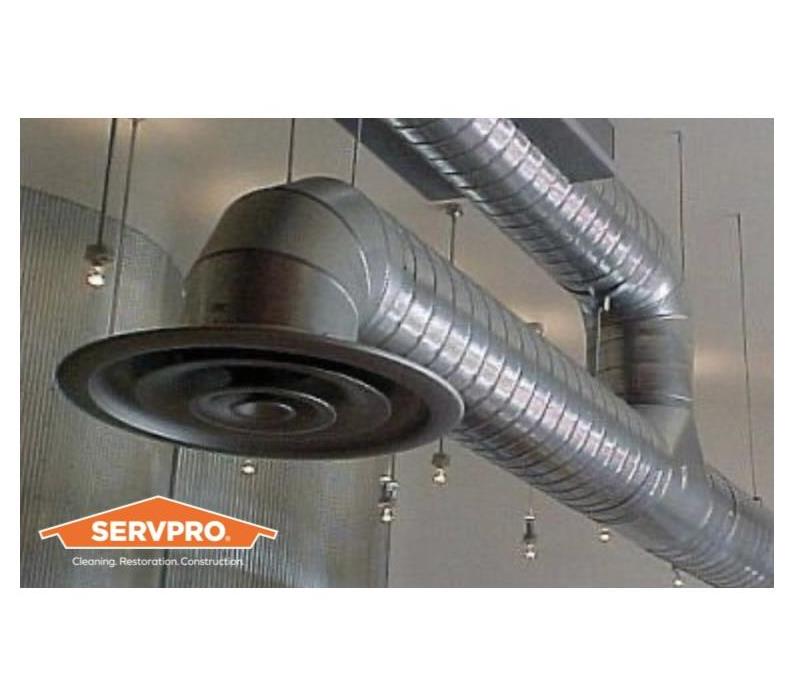 SERVPRO Air Duct Cleaning Services. Call 918-486-1055 today for your free inspection.
SERVPRO Air Duct Cleaning Services. Call 918-486-1055 today for your free inspection.
Ventilation and Indoor Air Quality
Proper ventilation helps improve indoor air quality. Ventilation can control indoor humidity and airborne contaminants, both of which either contribute to or act as hazards.
If your HVAC has been operating for some time without attention, it could be circulating the following:
- Dust
- Pollen
- Odors
- Dirt and debris
- Other contaminants
Benefits of HVAC Air Duct Cleaning
- A better-smelling home. Once you rid those air ducts of all that dust and nasty debris, you’ll probably notice that your home smells cleaner and fresher.
- Fewer pests. A clean air duct offers very little appeal to nasty pests like spiders, roaches, and mice. Dirty air ducts provide these little buggers with a place to build a nest and to find food.
- You’ll breathe easier. With clean air ducts, all of the tiny particles you can’t see will be reduced. Breathing in pollutants can cause you to feel sluggish and tired. Cleaner air makes it easier to breathe and should help to reduce any unwanted symptoms.
- Your air conditioning system will last longer. You already know that you should change the air filter in your unit every month. But a clean duct system also frees it up from clogs and will allow air to flow more freely. The result? A longer-lasting, more powerful cooling and heating system.
SERVPRO of Mayes and Wagoner Counties professionals routinely inspects the heating, ventilation, and air conditioning unit (HVAC). Keeping them clean can extend the life of the equipment, save money on repairs, and give you cleaner air to breathe. For additional information on HVAC and air duct cleaning, call us today at 918-486-1055.
Lake & Boating Safety
7/1/2021 (Permalink)
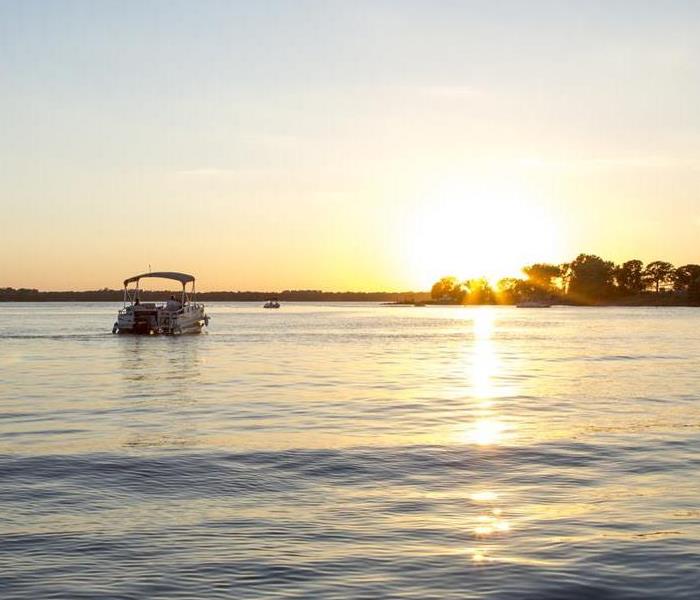 Boat on Grand Lake near Langley, Oklahoma
Boat on Grand Lake near Langley, Oklahoma
As a locally owned SERVPRO® Franchise, SERVPRO® of Mayes and Wagoner Counties is the leading storm damage restoration company serving the Coweta, Wagoner, Porter, Broken Arrow, Pryor, Chouteau, Locust Grove, Adair, Langley, Salina, Disney, Spavinaw, Okay, East Tulsa and Grand Lake areas with continuous coverage 24-hours a day, seven days a week. When severe weather damages a home or business, SERVPRO® technicians are ready to respond to any disaster and make it “Like it never even happened."
Summer is synonymous with barbecues, swimming, and fireworks. Today we will cover Lake and Water safety.
Oklahoma is home to over 200 lakes and over 1 million surface acres, perfect for boating, swimming, fishing and all kinds of water recreation. In our area we have five lakes, Grand Lake, Hudson Lake, Fort Gibson Lake, Spavinaw Lake and Lake Eucha.
And if you’ve been in Oklahoma for any amount of time, you know that this time of the year is lake time. But with that fun time in the water comes some safety tips that everyone should review.
When Swimming
- Never swim alone.
- Always wear a Coast Guard approved life vest. The USCG estimates that 76% of fatal accidents were the result of not wearing a life vest.
- Make sure your life vest fits you properly.
- Swim in designated areas.
- Always supervise children.
- Avoid using alcohol and drugs that can impair your motor skills.
- Understand the lake currents where you’re at.
- Know the weather conditions.
- Do not dive into the water. Jumping from cliffs or bridges is dangerous due to shallow water, submerged rocks, trees, or other hazards.
- Learn cardiopulmonary resuscitation (CPR). Because of the time it might take for emergency services to arrive, your CPR skills can make a difference in saving someone's life.
- Know the local weather conditions and forecast before swimming or boating. Strong winds and thunderstorms with lightning strikes are dangerous to swimmers and boaters.
- Do not use air-filled or foam toys, such as water wings, noodles, or inner tubes, in place of life jackets. These are toys and are not designed to keep swimmers safe.
When Boating
- Know the lake. Find a map of the lake you will be on and look out for dangerous spots, such as underwater structures, low water areas, areas prone to debris.
- Understand signage and flags around the lake and docks.
- Know the rules. Know the boating regulations for the area and state you are in.
- Have your boat checked by a professional. It is good to have your boat checked over by a professional at least once per boating season.
- Do a check of your boat before every time you go out. Check your motors, check the exterior of the boat. Doing a general check each time will help eliminate problems once out on the water.
- Use common sense. One of the most important parts of boating safety is to use your common sense.
- Always operate your vessel at a safe speed,
- Always stay alert not only of what is going on inside your boat but what is happening outside of it, this includes other watercraft, people, objects, etc.
- Be aware of buoys and other navigational aids, all of which have been placed there to ensure your own safety.
Other Helpful Tips
- Stay hydrated. Drink plenty of water and fluids while out on the lake to avoid heat stroke. Your body can dehydrate faster than you realize.
- Pack sunscreen. Apply sunscreen often throughout the day to avoid serious sunburn.
- Be aware of Carbon Monoxide poisoning while boating, especially if you are with a group of boats close together.
- Keep your phone, keys, and wallet in a sealed plastic bag to keep them water safe.
For more water safety information, visit www.redcross.org
For a lake near you, visit, www.travelok.com
SERVPRO® of Mayes and Wagoner Counties specializes in Fire and Water Cleanup and Restoration.
If you have any questions, call SERVPRO® of Mayes and Wagoner Counites, 918-486-1055 or email us at office@SERVPRO10980.com .
24/7 Emergency Response. Always FREE Estimates for any job.
SERVPRO® has an A+ rating with the Better Business Bureau.
Firework Safety
6/25/2021 (Permalink)
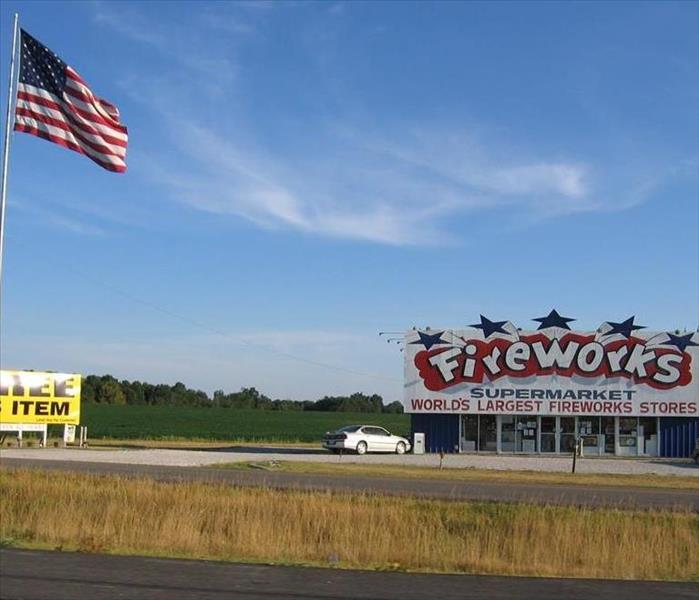 Firework Stand
Firework Stand
Summer is synonymous with barbecues, swimming, and fireworks. Today we will cover Firework safety.
If not handled properly and safely, Fireworks can be extremely dangerous, causing bodily injury and even structure fires.
The National Safety Council advises everyone to enjoy fireworks at public displays conducted by professionals, and not to use any fireworks at home. They may be legal, but they are not safe.
In 2017, eight people died and over 12,000 were injured badly enough to require medical treatment after fireworks-related incidents. Of these, 50% of the injuries were to children and young adults under age 20. Over two-thirds (67%) of injuries took place from June 16 to July 16. And while most of these incidents were due to amateurs attempting to use professional-grade, homemade or other illegal fireworks or explosives, an estimated 1,200 injuries were from less powerful devices like small firecrackers and sparklers.
Additionally, fireworks start an average of 18,500 fires each year, including 1,300 structure fires, 300 vehicle fires and nearly 17,000 other fires.
If consumer fireworks are legal to buy where you live and you choose to use them, be sure to follow the following safety tips:
- Never allow young children to handle fireworks
- Older children should use them only under close adult supervision
- Never use fireworks while impaired by drugs or alcohol
- Anyone using fireworks or standing nearby should wear protective eyewear
- Never hold lighted fireworks in your hands
- Never light them indoors
- Only use them away from people, houses and flammable material
- Never point or throw fireworks at another person
- Only light one device at a time and maintain a safe distance after lighting
- Never ignite devices in a container
- Do not try to re-light or handle malfunctioning fireworks
- Soak both spent and unused fireworks in water for a few hours before discarding
- Keep a bucket of water nearby to fully extinguish fireworks that don't go off or in case of fire
- Never use illegal fireworks
A Tip on SPARKLERS
Every year, young children can be found along parade routes and at festivals with sparklers in hand, but sparklers are a lot more dangerous than most people think.
Sparklers burn at about 2,000 degrees – hot enough to melt some metals. Sparklers can quickly ignite clothing, and children have received severe burns from dropping sparklers on their feet. According to the National Fire Protection Association, sparklers alone account for more than 25% of emergency room visits for fireworks injuries. For children under 5 years of age, sparklers accounted for nearly half of the total estimated injuries.
Consider using safer alternatives, such as glow sticks, confetti poppers or colored streamers.
The best choice might be to grab a blanket and a patch of lawn, kick back and let the experts handle the fireworks show.
Visit www.travelok.com for Independence Day, Fourth of July and Firework shows near you.
If you have any questions, call your SERVPRO® of Mayes and Wagoner Counites, 918-486-1055. 24/7 Emergency Response. Always FREE Estimates for any job.
SERVPRO® of Mayes and Wagoner Counties specializes in Fire and Water Cleanup and Restoration.
SERVPRO® has an A+ rating with the Better Business Bureau.
Grilling Summer Safety
6/25/2021 (Permalink)
Summer is synonymous with barbecues, swimming, and fireworks. Today we will cover Grilling safety.
Seven out of every 10 adults in the U.S. have a grill or smoker*, which translates to a lot of tasty meals. But it also means there is an increased risk of home fires.
In 2014-2018, fire departments went to an annual average of 8,900 home fires involving grills, hibachis, or barbecues per year, including 3,900 structure fires and 4,900 outside or unclassified fires.
Grilling fire facts
July is the peak month for grill fires (18%), including both structures, outdoor or unclassified fires, followed by June (15%), May (13%) and August (12%).
In 2014-2018, an average of 19,700 patients per year went to emergency rooms because of injuries involving grills.** Nearly half (9,500 or 48%) of the injuries were thermal burns, including both burns from fire and from contact with hot objects; 5,200 thermal burns, per year, were caused by such contact or other non-fire events.
Children under five accounted for an average of 2,000 or 39%, of the contact-type burns per year. These burns typically occurred when someone, often a child, bumped into, touched or fell on the grill, grill part or hot coals.
Gas grills were involved in an average of 8,900 home fires per year, including 3,900 structure fires and 4,900 outdoor fires annually. Leaks or breaks were primarily a problem with gas grills. Ten percent of gas grill structure fires and 22% of outside gas grill fires were caused by leaks or breaks.
Charcoal or other solid-fueled grills were involved in 1,300 home fires per year, including 600 structure fires and 600 outside fires annually.
Here are 10 Do’s and Don’t Tips
DO:
- Keep your grill at least 10 feet away from your house. Farther is even better. This includes portions attached to your house like carports, garages and porches. Grills should not be used underneath wooden overhangs either, as the fire could flare up into the structure above. This applies to both charcoal and gas grills.
- Clean your grill regularly. If you allow grease and fat to build up on your grill, they provide more fuel for a fire. Grease is a major source of flare ups.
- Check for gas leaks. You can make sure no gas is leaking from your gas grill by making a solution of half liquid dish soap and half water and rubbing it on the hoses and connections. Then, turn the gas on (with the grill lid open.) If the soap forms large bubbles, that's a sign that the hoses have tiny holes or that the connections are not tight enough. Turn the main gas valve off after each use.
- Keep decorations away from your grill. Decorations like hanging baskets, pillows and umbrellas look pretty AND provide fuel for a fire. To make matters worse, today's decor is mostly made of artificial fibers that burn fast and hot, making this tip even more important.
- Keep a spray bottle of water handy. That way, if you have a minor flare-up, you can spray it with the water to instantly calm it. The bonus of this tip is that water won't harm your food, so dinner won't be ruined!
- Keep a fire extinguisher within a couple steps of your grill. And KNOW HOW TO USE IT. If you are unsure how to use the extinguisher, don't waste time fiddling with it before calling 911. Firefighters say many fire deaths occur when people try to fight a fire themselves instead of calling for expert help and letting the fire department do its job.
DON’T
- Turn on the gas while your grill lid is closed. NEVER do this. It causes gas to build up inside your grill, and when you do light it and open it, a fireball can explode in your face.
- Leave a grill unattended. Fires double in size every minute. Plan so that all of your other food prep chores are done and you can focus on grilling.
- Overload your grill with food. This applies especially fatty meats. The basic reason for this tip is that if too much fat drips on the flames at once, it can cause a large flare-up that could light nearby things on fire.
- Use a grill indoors. People often think it will be safe to use a grill, especially a small one, indoors. NOT TRUE. In addition to the fire hazard, grills release carbon monoxide, the deadly colorless, odorless gas. That gas needs to vent in fresh air, or it can kill you, your family and pets.
For more information on fire or grill safety, visit www.nfpa.org
Source: NFPA's Applied Research. * Hearth, Patio and Barbecue Association (HPBA). **Consumer Product Safety Commission’s National Electronic Injury Surveillance System, queried in April 2016
If you have any questions, call your SERVPRO® of Mayes and Wagoner Counites, 918-486-1055. 24/7 Emergency Response. Always FREE Estimates for any job.
SERVPRO® of Mayes and Wagoner Counties specializes in Fire and Water Cleanup and Restoration.
SERVPRO® has an A+ rating with the Better Business Bureau.
Why SERVPRO®
5/4/2021 (Permalink)
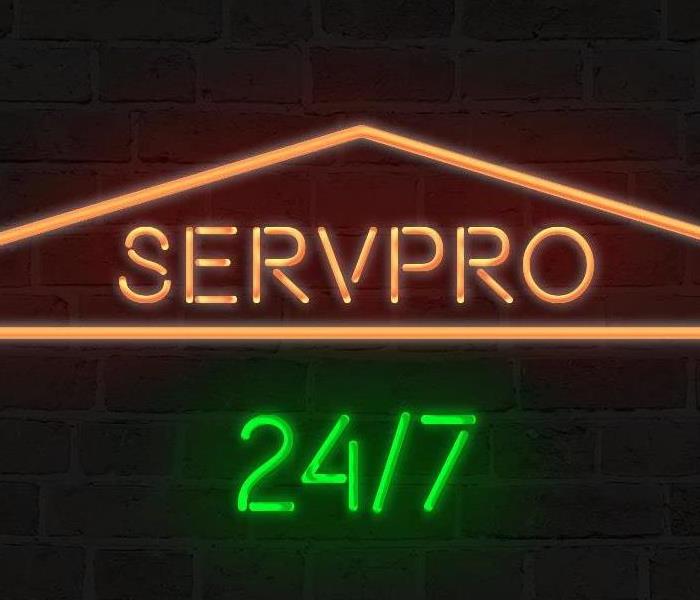 SERVPRO® is open 24/7
SERVPRO® is open 24/7
Why SERVPRO®?
SERPVRO® has been in business since 1967, has over 1,700 franchises all over the United States, 24-Hour Emergency service, detailed estimates and has trained technicians to meet every disaster need.
SERVPRO® specializes in Fire & Water – Cleanup @ Restoration.
SERVPRO® works with all residential, business, and commercial losses.
SERVPRO® offers a wide variety of professional services, from cleaning to restoration!
Cleaning
- Carpet, Upholstery, Drapes and Blinds.
- Ceilings, Walls and Hard Floors
- Air Ducts and HVAC
- Deodorization
- Biohazard and Crime Scene
- Vandalism
Restoration
- Fire, Smoke and Soot
- Water Removal and Dehumidification
- Mold, Mitigation and Remediation
- Catastrophic Storm Response
- Move Outs and Contents Restoration
- Electronics and Equipment
- Document Drying
- Contents Claim Inventory Services
Reconstruction
- We have in house crews to take care of your reconstruction needs.
- We can act as your general contractor to get you back in business.
- We have a list of preferred vendors to use for every project.
SERVPRO® proves to be faster to the disaster with our Timely Assignment guarantee.
- Within one hour from notice of loss, a SERVPRO® Franchise professional will contact you to arrange for service.
- Within four hours of loss notification, a SERVPRO® Franchise Professional will be on site to start mitigation services.
- Within eight hours of on-site arrival, a verbal briefing of the scope will be communicated to the adjuster. Which means, with approval work will begin ASAP.
There are no more waiting days for a contractor to respond when every hour counts, SERVPRO® is Here to Help.
What about Insurance?
SERVPRO® is the preferred Cleanup & Restoration company for most major insurance company and works with all insurance companies. We work with your insurance company directly to expedite your claim to get you back into your home or business as quick as possible. Our technicians will give detailed estimates, generate comprehensive room-by-room inventories, and categorize what can be salvaged and what is non-salvage from your loss.
If necessary, our SERVPRO® professionals are trained to move out and store inventory properly for the cleaning and reconstruction process.
Our Technicians are Certified!
Our technicians boast IICRC Certifications and go through continuing education classes to stay up to date on the latest tools, technology, and techniques.
- Water Damage Restoration Technician (WRT)
- Carpet Cleaning Technicians (CCT)
- Fire and Smoke Damage Restoration Technicians (FSRT)
- Upholstery and Fabric Cleaning Technicians (UFT)
- Applied Structural Drying Technicians (ASD)
Advanced Technology!
SERVPRO® understands using the proper equipment makes a measurable difference in reducing claim loss expenses. Using the right tool for the job, combined with our trained technicians saves the homeowner time and money.
From Detection equipment, Extraction equipment, Air Moving equipment, Dehumidification equipment and Deodorization equipment SERVPRO® has it all to ensure the right tool for the job.
If you have any questions, call your SERVPRO® of Mayes and Wagoner Counites, 918-486-1055. 24/7 Emergency Response. Always FREE Estimates for any job.
SERVPRO® of Mayes and Wagoner Counties specializes in Fire and Water Cleanup and Restoration.
SERVPRO® has an A+ rating with the Better Business Bureau.
Types of Smoke and Fires
5/4/2021 (Permalink)
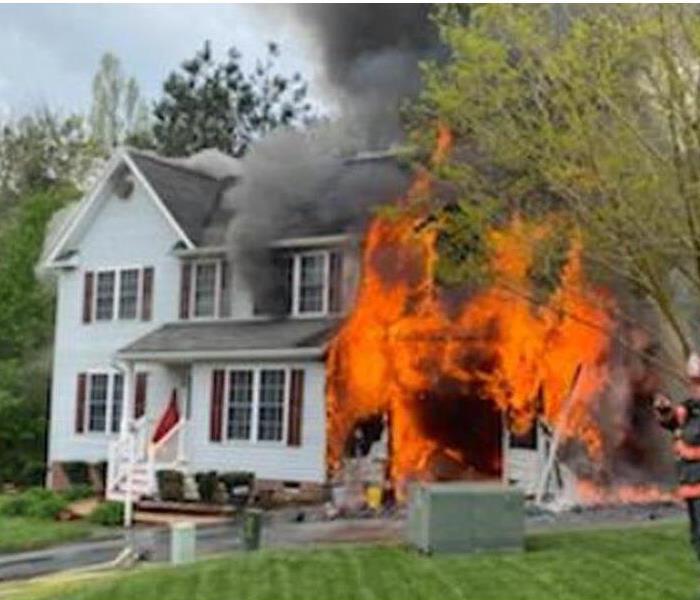 House fire in Pryor, Oklahoma
House fire in Pryor, Oklahoma
Fire is divided into five classes (A, B, C, D, and K) that are primarily based on the fuel that is burning. This classification system helps to assess hazards and determine the most effective type of extinguishing agent.
CLASS A – Involve common combustibles, such as wood, paper, cloth, rubber, trash, and plastics.
CLASS B – Involve flammable liquids, solvents, oil, gasoline, paints, lacquers, and other oil-based products.
CLASS C – Involve energized equipment such as wiring, controls, motors, machinery, or appliances.
CLASS D – Involve combustible metals such as magnesium, lithium, and titanium.
CLASS K - Involve combustible cooking media such as oils and grease commonly found in commercial kitchens.
As well as different types of fires, there are different types of smoke, wet and dry. With the different types of smoke comes different types of soot residue after a fire.
Before restoration can begin, SERVPRO® of Mayes and Wagoner Counties Technicians will test the soot to determine which type of smoke damage occurred. The cleaning procedures will then be based off the information from the testing.
Here are some examples of the different types of smoke.
Wet Smoke – Plastic and Rubber – Normally low heat, smoldering fire, leaves a pungent odor, sticky to the touch, and smeary throughout the structure. Leaves smoke webs.
Dry Smoke – Paper and Wood – Typically fast burning, high temperatures, heat rises throughout the structure and therefore smoke rises.
After the fire there may be more than just damage from the fire itself. Protein Fire Residue – Produced by evaporation of material rather than from a fire – It is virtually invisible, discolors paints and varnishes, it can leave an extreme pungent odor.
If you have any questions, call your SERVPRO® of Mayes and Wagoner Counites, 918-486-1055. 24/7 Emergency Response. Always FREE Estimates for any job.
SERVPRO® of Mayes and Wagoner Counties specializes in Fire and Water Cleanup and Restoration.
SERVPRO® has an A+ rating with the Better Business Bureau.
Why we use dry sponges
5/4/2021 (Permalink)
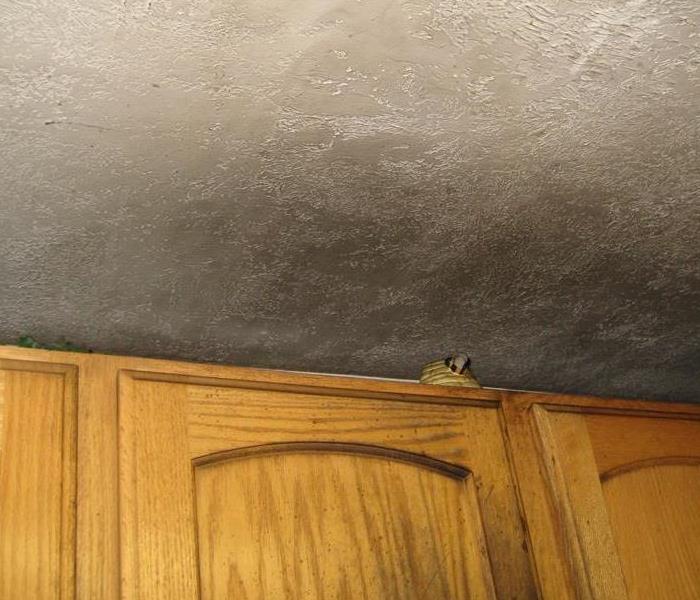 Example of soot left over from a fire we were called out on in Adair, Oklahoma
Example of soot left over from a fire we were called out on in Adair, Oklahoma
Dry Sponges aka Smoke Sponges are a type of sponge that SERVPRO® of Mayes and Wagoner Counties use to remove soot during a fire cleanup.
Dry Sponge Cleaning
The Dry-Cleaning Sponge is used to clean smoke residues from surfaces. Dry Cleaning Sponges are made of vulcanized natural rubber, like an eraser rubber sponges that contain no chemical products for the purpose of cleaning. Rather, sponges clean through friction and absorption. As a sponge is pressed, rubbed, and pulled across a soiled surface, the porous sponge absorbs soils from the surface. Firm pressure is needed to “erase” soot from a surface. Dry Cleaning Sponges are effective in some situations, but not in others.
Sponges clean flat, nonglossy surfaces better than glossy surfaces. The sponge often smears residues on a glossy surface, where a wet cleaning process is needed to remove the residues. Dry Cleaning Sponges can usually remove light-to-medium soils and residues that are non-greasy but should not be used for greasy residues.
Dry cleaning is the best alternative when wet cleaning is not possible. Wet cleaning is a more effective process for removing residues, but some surfaces may be damaged by a wet cleaning process. For example, moisture can set smoke residues into a porous surface, causing stains. Dry cleaning is the safest method to use on unfinished wood surfaces to avoid moisture setting residues into the porous wood.
Once the surface of the Dry Sponge is dirty, it must be discarded and cannot be cleaned or reused. The Dry Sponges are very porous and holds a remarkable amount of soot. After wiping soot off the surface, it then can be washed to the original condition.
A few notes if you do have a fire and soot is present.
- Don’t attempt to wash any walls.
- Don’t attempt to clean carpet or upholstered furniture without consulting SERVPRO® first.
- Do place towels or old linens over the carpet to limit further damage by walking on it.
- Do limit the movement throughout the structure to prevent soot particles from being further embedded into carpets and upholstery.
- Do keep hands clean and don’t touch anything that has soot on it.
- If the electricity is off, do empty any refrigerators, freezers and prop the doors open. This will prevent the food from leaving odors in the appliance after it is turned off.
- Don’t operate any electrical appliances or equipment that might have smoke damage until they have been cleaned and checked.
- Don’t send clothing with smoke residue to dry cleaners that are not experienced in cleaning fire-damaged clothing. SERVPRO® can help you in this step at getting your clothing cleaned.
- Do wash plants on both sides of the leaves with water.
- If your HVAC system was on, do make sure that the filter is changed and consult SERVPRO® regarding cleaning your HVAC duct system.
- Throw out any cosmetic or medications that may have been contaminated by smoke or the heat of the fire.
- Do not use any canned or packaged food that was close to the heat of the fire.
If you have any questions, call your SERVPRO® of Mayes and Wagoner Counites, 918-486-1055. 24/7 Emergency Response. Always FREE Estimates for any job.
SERVPRO® of Mayes and Wagoner Counties specializes in Fire and Water Cleanup and Restoration.
SERVPRO® has an A+ rating with the Better Business Bureau.
Summer Hygiene Tips
5/4/2021 (Permalink)
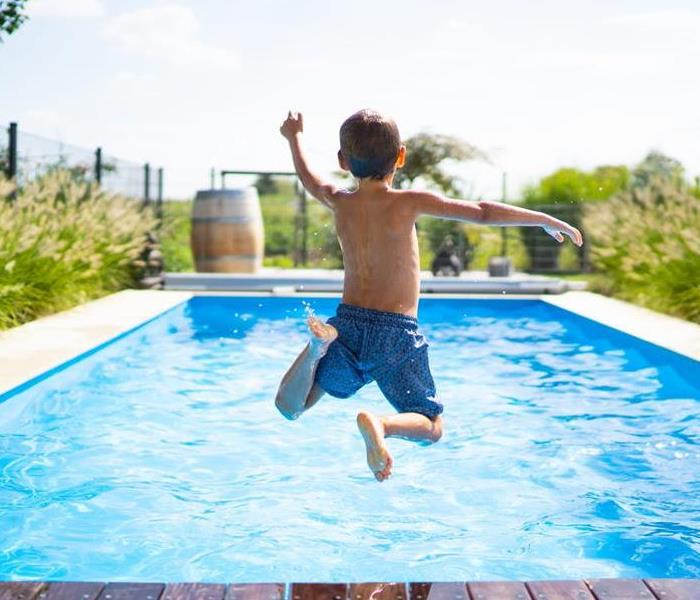 Summer time means pool time
Summer time means pool time
With restrictions being lifted or lightened and summer right around the corner, here are some summer hygiene tips to help you and your family whether you are going to the local pool (Pryor, Wagoner, Coweta) or water park (Wagoner) or the many lakes in our area such as Hudson Lake, Fort Gibson Lake, Grand Lake, Spavinaw Lake or Lake Eucha.
Healthy Swimming Behaviors
Although chlorine and other disinfectants are an effective way to kill germs found in recreational water, they do not work instantly. Despite the use of disinfectants, many people have become sick with recreational water illnesses (RWIs), which are caused by germs spread by swallowing, breathing in mists or aerosols of, or having contact with contaminated water from swimming pools, hot tubs/spas, lakes, rivers, or oceans.
RWIs include gastrointestinal, skin, ear, respiratory, eye, neurologic, and wound infections. The most commonly reported RWI is diarrhea, caused by germs like Cryptosporidium (“Crypto”) and E. coli 0157:H7.
In the past two decades, there has been an increase in the number of RWI outbreaks. Remember, chlorine and other disinfectants do not kill germs instantly. Additionally, the mixing of chlorine with pee and sweat uses up the chlorine in the pool, which would otherwise kill germs.
We all share the water we swim in, and each of us needs to do our part to help keep ourselves, our families, and our friends healthy.
To help protect yourself and other swimmers from germs, here are a few easy and effective steps all swimmers can take each time we swim:
Keep the pee, poop, sweat, and dirt out of the water!
- Stay out of the water if you have diarrhea.
- Shower before you get in the water.
- Don’t pee or poop in the water.
- Don’t swallow the water.
Every hour—everyone out!
- Take kids on bathroom breaks.
- Check diapers and change them in a bathroom or diaper-changing area–not poolside–to keep germs away from the pool.
- Reapply sunscreen.
- Drink plenty of fluids.
Check the free chlorine level and pH before getting into the water.
- Pools: Proper free chlorine level (1–3 mg/L or parts per million [ppm]) and pH (7.2–7.8) maximize germ-killing power.
- Hot tubs/spas: Proper disinfectant level (chlorine [3–10 parts per million or ppm] or bromine [4–8 ppm] and pH [7.2–7.8]) maximize germ-killing power.
- Most superstores, hardware stores, and pool-supply stores sell pool test strips.
For more safety tips or information, visit https://www.cdc.gov/healthywater/hygiene/swimming/index.html
If you have any questions, call your SERVPRO® of Mayes and Wagoner Counites, 918-486-1055. 24/7 Emergency Response. Always FREE Estimates for any job.
SERVPRO® of Mayes and Wagoner Counties specializes in Fire and Water Cleanup and Restoration.
SERVPRO® has an A+ rating with the Better Business Bureau.
Water Damage Comes in all Types
4/15/2021 (Permalink)
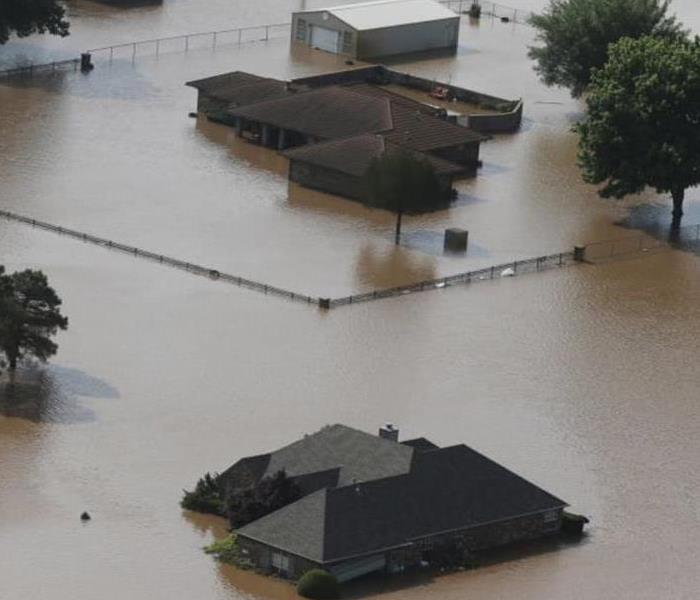 Flood waters from the May 2019 Historical Oklahoma Flood
Flood waters from the May 2019 Historical Oklahoma Flood
Water damage is two words that every home or business owner dreads hearing.
Water damage can originate by different sources such as a broken dishwasher hose, a washing machine overflow, a dishwasher leakage, broken/leaking pipes, flood waters, groundwater seepage, building envelope failures (leaking roof, windows, doors, siding, etc.) and clogged toilets.
According to the Environmental Protection Agency (EPA), 13.7% of all water used in the home today can be attributed to plumbing leaks.
Water damage begins when intruding water, it will enable attack of a material or system by destructive processes such as rotting of wood, mold growth, bacteria growth, rusting of steel, swelling of composite woods, de-laminating of materials such as plywood, etc.
The damage may be imperceptibly slow and minor such as water spots that could eventually mar a surface, or it may be instantaneous and catastrophic such as burst pipes and flooding. However fast it occurs, water damage is a major contributor to loss of property.
Between May and June 2019, the Green County area saw historic widespread flooding along the Arkansas River basin and its tributaries, which includes the Grand and Verdigris Rivers. The flooding reached from Fort Gibson Lake area to the Grand Lake area. Towns affected in our territory were Locust Grove, Chouteau, Wagoner, Coweta, Salina, Spavinaw, Kansas, Rose, Langley, Adiar, Inola, Claremore, Pensacola and Disney.
Flooding in the Arkansas River basin caused an estimated $3 billion in damage and killed five people.
There are three basic categories of water damage, based on the level of contamination.
Category 1 Water - Refers to a source of water that does not pose substantial threat to humans and classified as "clean water". Examples are broken water supply lines, tub or sink overflows or appliance malfunctions that involves water supply lines.
Category 2 Water - Refers to a source of water that contains a significant degree of chemical, biological or physical contaminants and causes discomfort or sickness when consumed or even exposed to. Known as "grey water". This type carries microorganisms and nutrients of micro-organisms. Examples are toilet bowls with urine (no feces), sump pump failures, seepage due to hydrostatic failure and water discharge from dishwashers or washing machines.
Category 3 Water - Known as "black water" and is grossly unsanitary. This water contains unsanitary agents, harmful bacteria and fungi, causing severe discomfort or sickness. Type 3 category are contaminated water sources that affect the indoor environment. This category includes water sources from sewage, seawater, rising water from rivers or streams, storm surge, ground surface water or standing water.
Category 2 Water or Grey Water that is not promptly removed from the structure and or have remained stagnant may be re classified as Category 3 Water. Toilet back flows that originates from beyond the toilet trap is considered black water contamination regardless of visible content or color.
Remember that every water damage is different, each requiring a unique solution. Your SERVPRO® of Mayes and Wagoner Counties team will inspect the damage to your property, then access what steps need to be taken, then create a plan of action.
Remember that SERVPRO® works will all insurance companies and is the preferred vendor for most insurance companies.
As a business or homeowner, one of the most important parts of the process is determining where the water has come from.. Finding the cause and making sure that the leak is fixed is the first of many steps that need to be taken.
The Damage - If left unresolved water damage can cost the home or business owner thousands of dollars’ worth of damage.
The Recovery - It is important to get our SERVPRO® team to the water loss as soon as possible to get the water removed swiftly.
- Our technicians use specialized equipment to target the water and use moisture sensing equipment to detect any wetness hiding where we cannot see.
- We will remove all the moisture from your property with air movers and dehumidifiers. Sometimes this may take a few days to complete this process.
- We will remove any damaged property such as carpet, cabinets, and appliances from the affected areas.
- We will also remove with care, any belongings such as furniture, clothing, and personal items that can be restored. We can clean and sanitize many of your restorable items.
- The restoration process could include major reconstruction, such as rebuilding. SERVPRO® can rebuild everything, from a room to a whole house or business.
SERVPRO® of Mayes and Wagoner Counties specializes in Fire and Water Cleanup and Restoration.
If you have any questions, call your SERVPRO® of Mayes and Wagoner Counites, 918-486-1055. 24/7 Emergency Response. Always FREE Estimates for any job.
Oklahoma - Tornado Alley
3/22/2021 (Permalink)
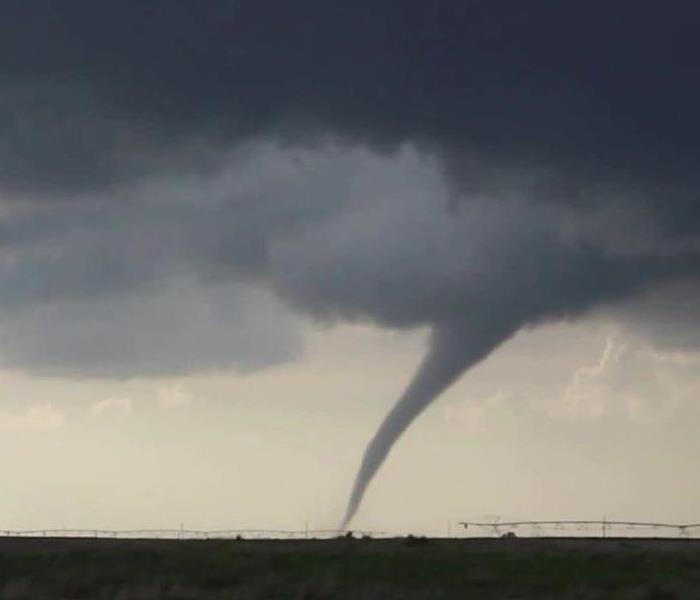 Tornado touching down in Oklahoma
Tornado touching down in Oklahoma
Oklahoma has a history of violent weather and Oklahoma produces more Tornadoes per year than other state in America. For this, Oklahoma is known as Tornado Alley. According to the National Weather Service, in 2019, Oklahoma broke the record for Tornadoes in a year with 146, 10 of those in our Mayes and Wagoner Counties area alone.
Defined by the National Weather Service, - a Tornado is a violently rotating column of air extending from the base of a thunderstorm down to the ground. Tornadoes can destroy well-made structures, uprooting trees, and hurling objects through the air like deadly missiles. Tornadoes can occur at any time of day or night and at any time of the year. Although tornadoes are most common in the Central Plains and the southeastern United States, they have been reported in all 50 states.
Tornadoes typically occur during the spring and early summer months in Oklahoma, however Tornadoes can happen any time of the year.
Since 1999 Wagoner County has had 34 reported Tornadoes and Mayes County has had 44 reported Tornadoes. Towns that have seen significant damage due to high winds include; Coweta, Broken Arrow, Wagoner, Okay, Porter, and the Fort Gibson Lake Area in Wagoner County and Pryor, Chouteau, Mazie, Locust Grove, Salina, Adair, Langley, Rose, Spavinaw, and the South Grand Lake Area in Mayes County.
The most resent Tornadic activity in our area was in 2020, when the Salina / Locust Grove area was hit by an EF1 Tornado with damage around the Hudson Lake area. Damage included uprooted trees, some roof damage and hail.
The most significant Tornado activity for our Mayes and Wagoner County area was in 1942 when and EF4 Tornado struck Pryor. This tornado touched down 5 miles south of Claremore at about 3:15 pm CST and moved east-northeast through rural parts of Rogers and Mayes Counties before taking aim on Pryor.
At 3:45 pm CST, the tornado entered Pryor and traveled directly through the main portion of the town, including the principal business section. Its violent winds demolished dozens of frame buildings and several brick buildings, including the First Baptist Church. After leaving Pryor, the tornado caused damage to the northeast of the town, completely wrecking everything in its path before it lifted about 3 miles northeast of Pryor. The damage swath was a quarter of a mile in width, and about a third of Pryor was destroyed by the tornado including much of the downtown.
Torrential rains accompanied the tornado and water knee deep surged down the main street. Communication and power lines were wiped out completely for 16 miles around Pryor and floodwaters interfered greatly with relief and rescue work and resulted in the closing of some of the highways leading into the city.
A total of 49 people were killed in Pryor, with another 3 persons killed to the west-southwest of the town. A total of 350 people were injured with 192 of those being hospitalized. Damages totaled $2.3 million and 500 buildings were damaged or destroyed. In 2021 money, the damage total would be over $32 million.
Here are some tips and things to know about preparing for Tornado season.
KNOW THE DIFFERENCE
- Tornado Watch: Be Prepared! Tornadoes are possible in and near the watch area. Review and discuss your emergency plans and check supplies and your safe room. Be ready to act quickly if a warning is issued or you suspect a tornado is approaching. Acting early helps to save lives! Watches are issued by the Storm Prediction Center for counties where tornadoes may occur. The watch area is typically large, covering numerous counties or even states.
- Tornado Warning: Take Action! A tornado has been sighted or indicated by weather radar. There is imminent danger to life and property. Move to an interior room on the lowest floor of a sturdy building. Avoid windows. If in a mobile home, a vehicle, or outdoors, move to the closest substantial shelter and protect yourself from flying debris. Warnings are issued by your local forecast office. Warnings typically encompass a much smaller area (around the size of a city or small county) that may be impacted by a tornado identified by a forecaster on radar or by a trained spotter/law enforcement who is watching the storm.
BE PREPARED
- Check the forecast. Listen to local news station on the TV, Radio, or a NOAA Weather Radio station to stay informed about tornado watches and warnings. Check the Weather-Ready Nation for tips. If storms are in your area, watch for darkening skies, lightning, increasing winds.
- If you have a smart phone, check your weather app on your phone or download a weather app to stay informed.
- Look for community pages on social media such as your local Emergency Management.
- Get a battery operated or hand crank radio to stay informed if the power goes out. (Look for one with a phone charger on it).
- Get an emergency kit, that includes first aid materials. You can find these at most retail stores in your area.
- Secure outdoor objects that could blow away or cause damage, such as trampolines, outdoor grills and lawn furniture.
- Create a Communications Plan: Have a family plan that includes an emergency meeting place and related information. If you live in a mobile home or home without a basement, identify a nearby safe building you can get too quickly, such as a church or family member.
- Pick a safe room in your home, such as a basement, storm cellar, or an interior room on the lowest floor with no windows. Check more ideas for your family plan at: https://www.ready.gov/make-a-plan
- Practice Your Plan: Conduct a family severe thunderstorm drill regularly so everyone knows what to do if a tornado is approaching. Make sure all members of your family know to go there when tornado warnings are issued. Don't forget pets if time allows.
- Prepare Your Home: Consider having your safe room reinforced. You can find plans for reinforcing an interior room to provide better protection on the Federal Emergency Management Agency website.
DURING A TORNADO
- Stay Weather-Ready: Continue to listen to local news or a NOAA Weather Radio to stay updated about tornado watches and warnings.
- At Your House: If you are in a tornado warning, go to your basement, safe room, or an interior room away from windows. Don't forget pets if time allows.
- At Your Workplace or School: Follow your tornado drill and proceed to your tornado shelter location quickly and calmly. Stay away from windows and do not go to large open rooms such as cafeterias, gymnasiums, or auditoriums.
- Outside: Seek shelter inside a sturdy building immediately if a tornado is approaching. Sheds and storage facilities are not safe. Neither is a mobile home or tent. If you have time, get to a safe building.
- In a vehicle: Being in a vehicle during a tornado is not safe. The best course of action is to drive to the closest shelter. If you are unable to make it to a safe shelter, either get down in your car and cover your head or abandon your car and seek shelter in a low-lying area such as a ditch or ravine.
- Stay safe, do not go storm chasing, leave that to the professionals.
AFTER A TORNADO
- Continue to listen to local news or a NOAA Weather Radio to stay updated about tornado watches and warnings. Multiple rounds of thunderstorms capable of producing tornadoes are possible during severe weather outbreaks.
- Contact Your Family and Loved Ones: Let your family and close friends know that you're okay so they can help spread the word. Text messages or social media are more reliable forms of communication than phone calls.
- Assess the Damage: After the threat for tornadoes has ended, check to see if your property has been damaged. When walking through storm damage, wear long pants, a long-sleeved shirt, and sturdy shoes. Contact local authorities if you see power lines down. Stay out of damaged buildings. Be aware of insurance scammers if your property has been damaged.
- Help Your Neighbor: If you come across people that are injured and you are professionally trained, provide first aid to victims if needed until emergency response teams arrive.
- Stay safe, do not go storm chasing, leave that to the professionals.
SERVPRO® of Mayes and Wagoner Counties specializes in Fire and Water Cleanup and Restoration.
If you have any questions, call your SERVPRO® of Mayes and Wagoner Counites, 918-486-1055. 24/7 Emergency Response.
Emergency numbers for our Mayes and Wagoner Counites Area to keep handy.
Oklahoma Natural Gas (ONG) – 800-664-5464 GRDA (Electric) – 918-256-5545 PSO (Electric) - 1-888-218-3919
Wagoner County Emergency Management – 918-279-0059
Wagoner County Sheriff Department – 911 or Non-Emergency 918-485-3124
Coweta Fire Department – 911 or Non-Emergency 918-486-2121 Coweta Police Department – 911 or Non-Emergency 918-486-2121
Coweta Water Department – 918-486-2189
Wagoner Fire Department – 911 or Non-Emergency 918-485-8082 Wagoner Police Department – 911 or Non-Emergency 918-485-9564
Wagoner Water Department - 918-485-4586, Ext. 237
Porter Fire Department - 911 or Non-Emergency 918-483-2521 Porter City Hall / Utilities – 918-483-8331
Mayes County Emergency Management – 918-825-4650
Mayes County Sheriff Department - 911 or Non-Emergency 918-825-3535
Chouteau Fire Department – 911 or Non-Emergency 918-476-8928 Chouteau Police Department - 911 or Non-Emergency 918-476-5225
Chouteau City Hall / Utilities – 918-476-5902
Pryor Fire Department - 911 or Non-Emergency 918-825-4650 Pryor Police Department - 911 or Non-Emergency 918-825-1212
Pryor City Hall / Utilities – 918-825-0888
What to do if your pipes Freeze
2/18/2021 (Permalink)
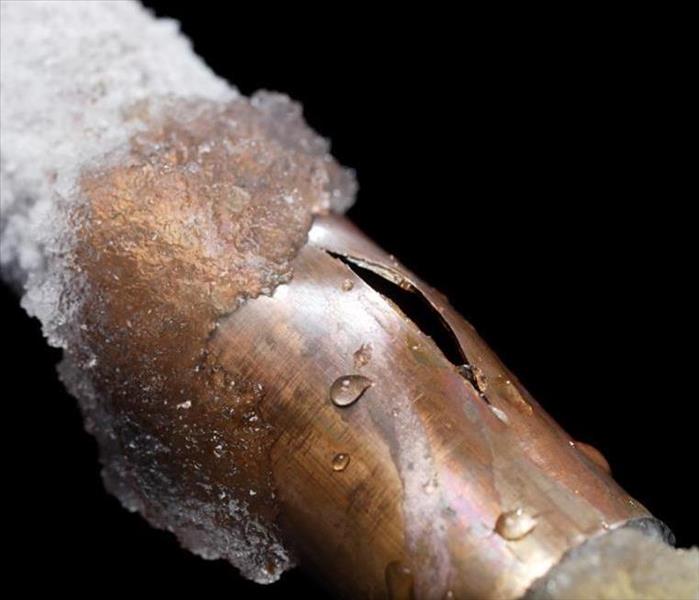 Frozen pipes can cause damage to your home or business.
Frozen pipes can cause damage to your home or business.
With the current freezing temperatures, the freezing rain and snow fall, we are receiving several calls and inquiries about how to thaw out frozen pipes.
Here are a few quick tips on how to prevent and get your pipes thawed out.
- Locate the frozen pipe – Begin your trace from the faucet that is not working and locate where the frozen pipe is.
- Open the Faucet - Before you begin attempting to thaw a frozen pipe, you will want to open the faucet that the pipe feeds water into. Make sure to open both the hot and cold handles. This will help to relieve pressure in the system and will allow the water to escape once you begin to thaw the pipe.
- Where to Begin the Thawing Process - You should always begin the thawing process near the faucet then work your way down to the blockage. This will help ensure that the melting ice and steam is able to escape through the open faucet. If you start the thawing process closer to the blockage, the melting ice could get stuck behind the blockage, creating more pressure in the pipe, and increasing the chances the pipe will burst.
- Thawing Exposed Pipes -If the frozen pipe is in an area you can easily access, you have several options for attempting to thaw the pipe. You should continue to apply the heat until the water escaping from the faucet returns to full strength. Here are four options for thawing an exposed pipe.
- Hair Dryer- One of the easiest ways to thaw a pipe is by using a hairdryer. Simply turn the dryer on and point the heat at the pipe, beginning with the portion closest to the faucet. As with any electrical product, take the proper precautions and avoid encountering water when operating the device.
- Heat Lamp or Portable Space Heater- Another method to thaw the pipe is to use a heat lamp or portable space heater. Position the device so that the heat can reach the frozen pipe. This indirect heat can help to quickly thaw a pipe. Again, make sure to comply with the safety measures and precautions on the device you are using and keep the device away from water. NOTE - This should be closely monitored so not to start a fire.
- Hot Towels- Another way to thaw a frozen pipe is to wrap towels that have been dipped in hot water around the pipe. This can help to slowly thaw the blockage.
- Electrical Heating Tape- A final option is to apply electrical heating tape directly to the pipe. This tape distributes heat throughout the pipe. You can purchase electrical heating tape that you plug in and unplug as needed or you can purchase heating tape that shuts off on its own.
- Things to Avoid - Never attempt to thaw a pipe using an open flame, such as a propane torch. This can not only damage the pipe, but it can also start a fire in your property.
- If the Pipe Bursts - If a frozen water pipe does burst, the first thing you should do is shut off the main water line into your property. This will prevent additional water from flowing and damaging your property. You should know where the shut-off valves are for each of your properties and for each unit. There are usually smaller shut-off valves located near sinks and toilets, but the main shut-off valve is often located near the water meter.
- If the Break is Outside of your House – If the water line break is outside of your house, contact your local water department.
- Call a Professional - Call a Professional- If you are unable to thaw the pipe, unable to locate the frozen pipe, do not feel comfortable thawing a pipe yourself or if a pipe bursts, or If you do have a problem with any plumbing issue, contact a licensed plumber or contact SERVPRO® of Mayes and Wagoner Counties and we can recommend a reputable plumbing service.
For more Tips and Tricks on how to prevent frozen pipes, check out more of our blogs at https://www.SERVPROmayesandwagonercounties.com/blog
SERVPRO® of Mayes and Wagoner Counties specializes in Fire and Water Cleanup and Restoration.
If you have any questions, call your SERVPRO® of Mayes and Wagoner Counites, 918-486-1055. 24/7 Emergency Response Always FREE Estimates for any job.
Tips to keep your Pets safe during Freezing Temps
2/18/2021 (Permalink)
 Keeping your pets Warm in freezing temps
Keeping your pets Warm in freezing temps
In many areas, winter is a season of bitter cold and numbing wetness. Make sure your four-footed family members stay safe and warm by following these simple guidelines.
- Keep pets sheltered - Keep your pets inside with you and your family if possible.
- If your dog (or cat) is outdoors much of the day, they must be protected by a dry, draft-free shelter that is large enough to allow them to move comfortably, but small enough to hold in body heat. The floor should be raised a few inches from the ground and covered with cedar shavings or straw. The doorway should be covered with waterproof burlap or heavy plastic.
- Pets who spend a lot of time outdoors need more food in the winter because keeping warm depletes energy. Make sure that they have adequate food.
- Routinely check your pet's water dish to make certain the water is fresh and unfrozen. Use plastic food and water bowls; when the temperature is low, your pet's tongue can stick and freeze to metal.
- Bundle up, wipe down - Exposed skin on noses, ears and paw pads are at risk for frostbite and hypothermia during extreme cold snaps. Look into getting your pet a coat or sweater, especially for short hair breeds.
- Rock salt and other chemicals used to melt snow and ice can irritate the pads of your pet's feet. Wipe all paws with a damp towel before your pet licks them and irritates their mouth.
- Dogs are at particular risk of salt poisoning in winter due to the rock salt used in many areas—often when licking it from their paws after a walk. Store de-icing salt in a safe place and wipe your dog’s paws, even after short walks. If your dog ingests rock salt, call a veterinarian immediately.
- Remove common poisons - Antifreeze is a deadly poison, but it has a sweet taste that may attract animals and children. Wipe up any antifreeze spills immediately and keep it, like all household chemicals, out of reach. Coolants and antifreeze made with propylene glycol are less toxic to pets, wildlife and family.
- Protect outdoor animals - If there are outdoor cats, either owned pets or community cats in your area, remember that they need protection from the elements as well as food and water.
- You can make your own cat shelter quickly and easily with a plastic tub.
- Cars are one of many hazards to small animals—warm engines in parked cars attract cats and small wildlife, who may crawl up under the hood. To avoid injuring any hidden animals, bang on your car's hood to scare them away before starting your engine.
- Speak out - If you encounter a pet left in the cold, politely let the owner know you're concerned. Some people genuinely do not know the risk that cold weather poses to their pets or livestock and will be quick to correct any problems you address. If someone you raise these concerns with responds poorly or continues to neglect their animals, follow our steps on reporting winter neglect.
Horse and Livestock Care - Be sure your livestock has access to a barn or a three-sided run-in so they can escape the wind and cold. While not all horses will need to be blanketed, blankets will help horses keep warm and dry, especially if there is any rain or snow. If you’ve body-clipped your horses, keep them blanketed throughout the winter.
Always give your livestock access to unfrozen water. You can use heated buckets or water heaters/de-icers to make sure the water doesn’t freeze.
For more information on how to keep your pets safe, visit https://www.humanesociety.org/resources/five-ways-protect-pets-winter
For more Tips and Tricks, check out more of our blogs at https://www.SERVPROmayesandwagonercounties.com/blog
SERVPRO® of Mayes and Wagoner Counties specializes in Fire and Water Cleanup and Restoration.
If you have any questions, call your SERVPRO® of Mayes and Wagoner Counites, 918-486-1055. 24/7 Emergency Response Always FREE Estimates for any job.
Tips to prevent Frozen Pipes
1/25/2021 (Permalink)
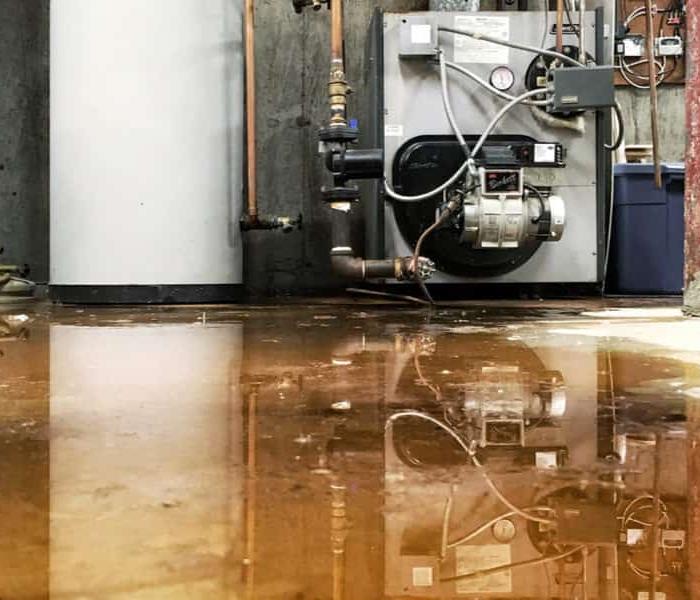 A frozen pipe from a recent freeze causes damage at a customer's home.
A frozen pipe from a recent freeze causes damage at a customer's home.
We haven’t had many below freezing days here in Eastern Oklahoma, but temperatures can get freezing cold and the consequences of freezing temperatures is unfortunately frozen water pipes.
There are many easy ways to prevent your pipes from freezing and here are a few measures you can take to ensure you are not dealing with water damage from busted pipes this winter.
Tips to Avoid Frozen Pipes
- Pay Attention to the Weather: Pipes typically freeze during long periods of freezing temperatures.
- Drain During the Fall: Now is the time to drain any outdoor water lines. Drain your outdoor water lines to swimming pools and sprinkler systems now so that there is no moisture left over that may cause them to freeze.
- Insulate: A great preventative measure to take is investing in sleeves for your pipes. Fashioning a sleeve style pipe insulator over your plumbing in unheated exterior walls, basements, crawl spaces, or garages is the best way to help these pipes remain above freezing temperatures.
- Proper insulation in your home helps too. Check to ensure that you have properly insulated all the rooms in your home. Now is the time to take note of any unusual drafts coming from doors or windows and alleviate the problem.
- Open Cabinets and Doors: Open the doors to your kitchen and bathroom cabinets. You might not realize how cold these spaces get when the doors are closed. Leaving these doors ajar allows warm air to circulate around your pipes and prevents them from freezing in cold weather.
- Let Your Faucet Drip: This step may seem counter-intuitive and even wasteful, but the energy expense of letting a little water drip from your faucet in extreme cold is nothing compared to a large repair bill for a pipe that burst because it froze over. By letting even, a trickle of water run through your pipe, it helps prevent the pipe from freezing.
- Keep Your Home Warm: You might want to cut corners on heating your home at night or if you take a vacation this winter, but it’s incredibly important to keep your home warm at all times. Keep your home at a relatively consistent temperature throughout the day and night.
- If you’re taking a trip for the holidays, leave your thermostat set for 55°F to avoid coming home to frozen plumbing. This is particularly important in our area with Grand Lake, Grand River, Spavinaw Lake, Hudson Lake and Fort Gibson Lake with Lake Homes. Take a day and inspect your lake home and ensure everything is where it needs to be.
If you do have a problem with any plumbing issue, contact a licensed plumber or contact SERVPRO® of Mayes and Wagoner Counties and we can recommend a reputable plumbing service.
SERVPRO® of Mayes and Wagoner Counties specializes in Fire and Water Cleanup and Restoration.
If you have any questions, call your SERVPRO® of Mayes and Wagoner Counites, 918-486-1055. 24/7 Emergency Response Always FREE Estimates for any job.
Why your business needs an ERP
1/11/2021 (Permalink)
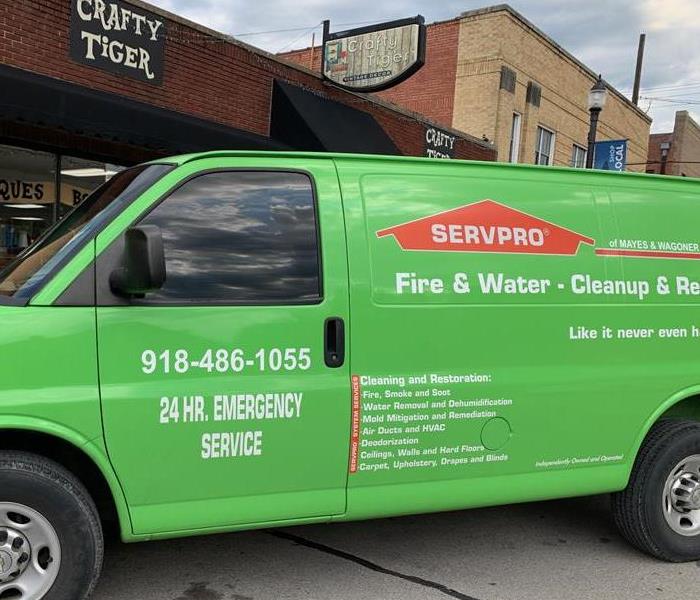 SERVPRO® at an ERP visit at one of our local customers.
SERVPRO® at an ERP visit at one of our local customers.
Why your Business needs an ERP
What is an ERP? An ERP stands for Emergency Ready Profile.
So, what is an Emergency Ready Profile?
An ERP is a plan that provides critical information needed for a business in time of emergency to map out the fastest way to get back to business.
Pre-planning can serve as an insurance policy aimed at peace of mind and knowing that you are ready for whatever happens. By developing a SERVPRO® ERP for your business you can minimize business interruption by having a plan of action. Knowing what to do and what to expect in advance is the key to helping your business.
What are the advantages of an ERP?
- The ERP is no cost to the facility.
- The ERP will provide information needed in the event of an emergency to employees and management.
- The ERP Identifies a line of command for authorizing work such as authorized plumbers, electricians, etc..
- The ERP will provide facility details such as water shut off, electrical shut off, gas shut off, emergency numbers, emergency contacts, etc….
- The ERP will identify your local SERVPRO® franchise for quick response for water mitigation and restoration.
- SERVPRO® has over 50 years of experience in reduction of the impact of any disaster.
Let us help you get a plan in place!
SERVPRO® of Mayes and Wagoner Counties can provide an ERP for your business at no expense. Call us today to schedule your ERP before you need it.
SERVPRO® of Mayes and Wagoner Counties specializes in Fire and Water Cleanup and Restoration.
If you have any questions, call your SERVPRO® of Mayes and Wagoner Counites, 918-486-1055. 24/7 Emergency Response Always FREE Estimates for any job.
HVAC System cleaning, now is the time
1/11/2021 (Permalink)
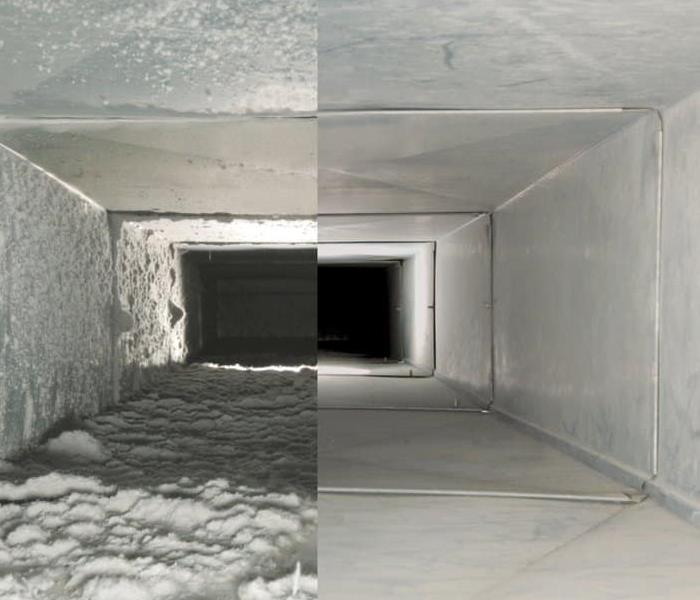 HVAC cleaning, before and after
HVAC cleaning, before and after
With winter here, now is the perfect time to schedule a HVAC system cleaning for your business or home.
The constant temperature changes in our area can cause mold and mildew to grow in your HVAC ventilation system (or ducts) as well as lint build up that could potential be a fire risk during the colder months.
What is lurking in your ducts you may ask?
Your ducts can be holding years of dust, dirt and mold / mildew, which has the potential for not only health issues but damage to your HVAC system if not cleaned properly as the dirty ducts keep circulating the polluted air throughout the house or building.
Why use SERVPRO®?
- SERVPRO® has a proven duct cleaning system that is cost-efficient
- SERVPRO® will inspect your HVAC system and ductwork and make recommendations about the best way to address the concerns.
- By cleaning the HVAC system SERVPRO® can eliminate odors, restore peak energy efficiency, reduce potential mold growth, and remediate bacteria, fungi and mold growth in the system.
- SERVPRO® will provide FREE estimates and inspections for the HVAC system.
- Our process uses patented equipment that adapts to the duct’s shape to remove debris and firth before the vacuuming begins.
- A powerful push-pull air delivery and collection system transfers the debris from the duct to the collection container.
- Air is filtered through HEPA filtration system, removing 99.97% of particles in the airstream, thus keeping the environment clean.
So now is the time to get your HVAC system inspected to ensure not only a healthy system but healthy air quality. Give us a call today to schedule your free estimate. 918-486-1055.
SERVPRO® of Mayes and Wagoner Counties specializes in Fire and Water Cleanup and Restoration.
If you have any questions, call your SERVPRO® of Mayes and Wagoner Counites, 918-486-1055. 24/7 Emergency Response Always FREE Estimates for any job.
COVID-19 Tips and Protecting Yourself
1/11/2021 (Permalink)
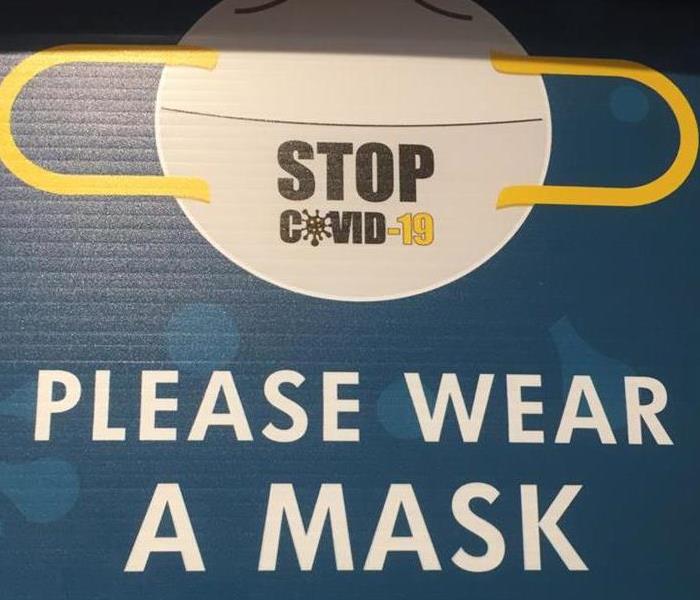 COVID-19 Pandemic Please Wear a Mask
COVID-19 Pandemic Please Wear a Mask
Entering year one of the Coronavirus (COVID-19) pandemic we have all heard varying thoughts and procedures to keep a person safe. But here at SERVPRO® of Mayes and Wagner Counites, we would like to have a little reminder course on some safe practices.
Personal hygiene is especially important at this time, here are a few tips to follow.
- Wear a mask in public settings that covers both your nose and mouth.
- Masks should not be placed on young children under age 2, anyone who has trouble breathing, or is unconscious, incapacitated or otherwise unable to remove the mask without assistance.
- Do NOT use a mask meant for a healthcare worker. Currently, surgical masks and N95 respirators are critical supplies that should be reserved for healthcare workers and other first responders.
- Frequently wash your hands with soap and water for at least 20 seconds.
- Wash your hands after you have sneezed or coughed in your hands.
- Wash your hands after you have been out in public.
- Wash your hands before you eat or drink anything.
- Wash your hands after you have used the restrooms.
- When soap and running water are unavailable, use an alcohol-based sanitizer with at least 60% alcohol.
- Avoid poorly ventilated areas.
- Avoid indoor spaces that do not offer fresh air from the outdoors as much as possible. If indoors, bring in fresh air by opening windows and doors, if possible.
- Avoid large crowds or gatherings.
- Avoid indoor spaces that do not offer fresh air from the outdoors as much as possible. If indoors, bring in fresh air by opening windows and doors, if possible.
- Avoid touching your eyes, nose, or mouth with unwashed hands.
- Cover your cough or sneeze with a tissue, then throw the tissue in the trash.
- If a tissue is unavailable, use the bend of your elbow to catch your cough or sneeze.
- Clean and disinfect frequently touched objects and surfaces using a regular household cleaning spray or wipe.
- Remote controls, cell phones, keys, light switches, and door handles are a few examples of objects that should be cleaned as frequently as possible.
- Stay home when you are not feeling well to prevent the risk of spreading illness to others.
- Common symptoms include but are not limited to – shortness of breath, loss of taste, loss of smell, high fever, aches and pains, headaches.
- Maintain a proper social distance between people, about six feet or two arm’s length apart.
- Maintaining a safer than normal distance around those who are more susceptible to catching the virus is recommended.
- Shaking hands and other forms of social greeting that creates contact with other people is discouraged during this period.
- Try bumping elbows or just a friendly waive during the pandemic.
Our team hopes that these tips were helpful and that everyone will stay safe in such a crisis and take the proper precautions to remain healthy.
If you have any questions, call your SERVPRO® of Mayes and Wagoner Counites, 918-486-1055. 24/7 Emergency Response.
Thunderstorm Preparedness for Oklahoma
1/4/2021 (Permalink)
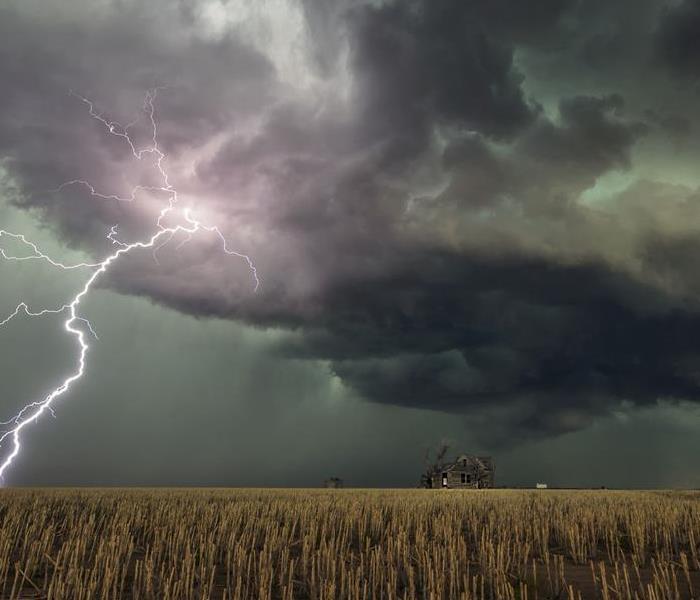 Thunderstorm moving in over wheat field.
Thunderstorm moving in over wheat field.
Because of the location of Oklahoma, the state sees more major thunderstorms per year than nearly any other state.
Thunderstorms can be a beautiful site but are very unpredictable and can cause severe damage to your home, business, and property in a mater of minutes without any warning.
Thunderstorms normally occur during the evening or night but can happen at any time of the day. Most Thunderstorms include lighting and often include high winds over 50 MPH, hail, can cause flash floods and especially in Oklahoma, they can cause tornadoes.
Remember that thunderstorms are serious. In the United States, lighting from thunderstorms kill over 300 people a year and injure another 80.
Here are some tips to be prepared for Thunderstorms.
Preparing for a Thunderstorm and Lightning
- Familiarize yourself with the terms that are used to identify a thunderstorm hazard, including understanding the difference between a severe thunderstorm watch and a severe thunderstorm warning.
- A thunderstorm watch means there is a possibility of a thunderstorm in your area.
- A thunderstorm warning means a thunderstorm is occurring or will likely occur soon. If you are advised to take shelter so immediately.
- Get anemergency supply kit. You can find these at most retail stores in your area.
- Remove dead or rotting trees and branches that could fall and cause injury or damage during a severe thunderstorm.
- Use the 30/30 lightning safety rule. If you see lightning and you cannot count to 30 before hearing thunder, go indoors. Then stay indoors for 30 minutes after hearing the last clap of thunder.
Have a Thunderstorm Plan
- If a thunderstorm is likely in your area, postpone outdoor activities.
- Secure outdoor objects that could blow away or cause damage, such as trampolines, outdoor grills and lawn furniture.
- Avoid showering or bathing during a thunderstorm. Plumbing and bathroom fixtures can conduct electricity.
- Watch for darkening skies, lightning, increasing winds.
- Go quickly inside a home, building, or hard top automobile, if possible.
- If an underground shelter is available go there.
- If shelter is not available go to the lowest area nearby and make yourself the smallest target possible but do not lie flat on the ground.
- If on open water, get to land and shelter immediately.
- Things to avoid include:
- Tall, isolated tree in an open area.
- Hilltops, open fields, the beach, a boat on the water, isolated sheds, or other small structures in open areas.
- Stay away from anything metal, such as tractors, farm equipment, motorcycles, golf carts, golf clubs, and bicycles
Stay Informed
- Tune into your local news station on the TV or radio.
- If you have a smart phone, check your weather app on your phone or download a weather app to stay informed.
- Look for community pages on social media such as your local Emergency Management.
- Get a battery operated or hand crank radio to stay informed if the power goes out. (Look for one with a phone charger on it).
Be Aware
- A corded telephone should only be used in an emergency, but cordless phones and cell phones are safe to use.
- Avoid potential flooded roads. Just six inches of water can knock a person off their feet and up to one foot of moving water can push your car off the road.
- Stay safe, do not go storm chasing, leave that to the professionals.
SERVPRO® of Mayes and Wagoner Counties specializes in Fire and Water Cleanup and Restoration.
If you have any questions, call your SERVPRO® of Mayes and Wagoner Counites, 918-486-1055. 24/7 Emergency Response.
What to do with Water Damage
1/4/2021 (Permalink)
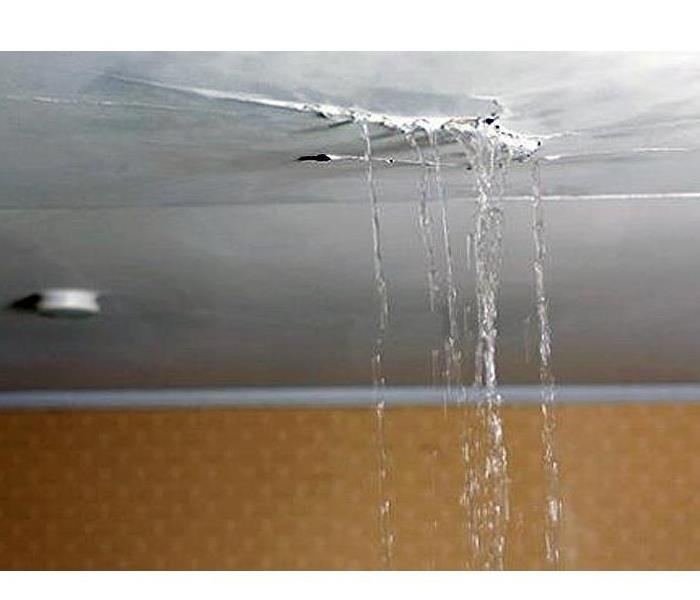 A customer's ceiling is leaking after the recent snow fall.
A customer's ceiling is leaking after the recent snow fall.
Water damage is two words that every home or business owner dreads hearing. And every water damage is different, each requiring a unique solution.
Your SERVPRO® of Mayes and Wagoner Counties team will inspect the damage to your property, then access what steps need to be taken, then create a plan of action.
Remember that SERVPRO® works will all insurance companies and is the preferred vendor for most insurance companies.
One of the most important parts of the process is determining where the water has come from. Whether the water has come from a leaking water line, a hot water tank, clogged toilets, broken water line, broken dishwasher hose, a washing machine, a leaky roof, foundation cracks, a flood or from recent snow and or ice. Finding the cause and making sure that the leak is fixed is the first of many steps that need to be taken.
The Damage
If left unresolved water damage can cost the home or business owner thousands of dollars’ worth of damage.
- Even minor water leaks can lead to larger issues later if not resolved.
- Water can:
- Damage flooring, particularly wood and laminate flooring.
- Walls (sheetrock, drywall panels).
- Cause rotting wood (cabinets).
- Damage household appliances.
- Ruin carpet and padding.
- Damage furniture.
- Cause rusting of metal.
- Lead to mold growth.
- Mold growth can occur very quickly and lead to even more issues, including health related if not treated properly by a trained professional such as our SERVPRO® team.
The Recovery
It is important to get our SERVPRO® team to the water loss as soon as possible to get the water removed swiftly.
- Our technicians use specialized equipment to target the water and use moisture sensing equipment to detect any wetness hiding where we cannot see.
- We will remove all the moisture from your property with air movers and dehumidifiers. Sometimes this may take a few days to complete this process.
- We will remove any damaged property such as carpet, cabinets, and appliances from the affected areas.
- We will also remove with care, any belongings such as furniture, clothing, and personal items that can be restored. We can clean and sanitize many of your restorable items.
- The restoration process could include major reconstruction, such as rebuilding. SERVPRO® can rebuild everything, from a room to a whole house or business.
SERVPRO® of Mayes and Wagoner Counties specializes in Fire and Water Cleanup and Restoration.
If you have any questions, call your SERVPRO® of Mayes and Wagoner Counites, 918-486-1055. 24/7 Emergency Response. And always FREE Estimates for any job.
12 Tips for the New Year
1/4/2021 (Permalink)
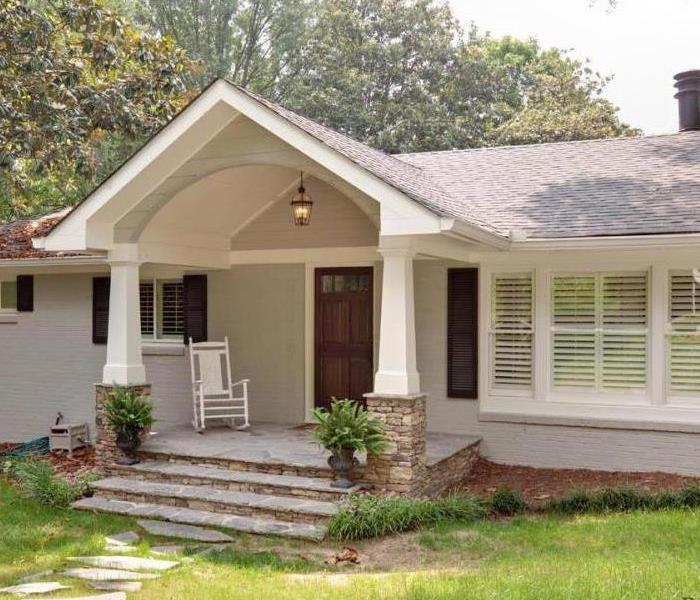 Take time to do some inspections of your home.
Take time to do some inspections of your home.
Welcome to 2021.
2020 was one for the books but we at SERVPRO® of Mayes and Wagoner Counties are excited for what the new year brings.
We are entering our second year as the newest SERVPRO® franchise in the area and thrilled to be serving eastern Oklahoma.
With the new year we want to offer a few tips to it kick off.
12 Tips for the New Year
- Do a general safety check around your home. Check your smoke detector and carbon monoxide detector and make sure they are in good working order. Make sure you have an updated fire extinguisher in your kitchen and one on the other end of the house too.
- Go over a fire / emergency evacuation plan with your family. Identify all the exits, including windows that can be used to escape if needed. Also have a plan of where to meet if you must evacuate the house.
- Locate your shut offs for your home. Locate your water, gas and main power shut off. If you are unsure of there location, contact your service provider. For business, SERVPRO® offers a free ERP (Emergency Response Plan). Ask us about it.
- Check for leaks around the house. With the colder weather, weak points in your plumbing will present themselves. Take some time to inspect around sinks, toilets, and showers for leaks.
- Make sure your windows and doors are properly sealed. Cracks around doors and windows can allow heat to escape, causing higher heating bills.
- Look for limbs on the roof and clogged up gutters, which can cause water intrusion under your roof.
- As spring and warmer temperatures arrive, do a quick self-service on your A/C unit. First disconnect your unit from the power. Rake away any leaves or debris from around your outside unit. If you are mechanically inclined, remove the outside shell and clean out the inside of the unit. Using a degreaser cleaner and water hose will do wonders.
- If you have a deck. Check your deck for protruding nails or screws. Check for any loose or rotten boards, replace or repair as needed. A new coat of paint or stain will help protect your deck throughout the summer.
- Check for insect activity and take a few minutes and look for any signs of termite or carpenter ant damage. Over the counter pest control sprays are a great way to keep unwanted insects from invading your home but you can always contact a professional pest company to assist you with this.
- Give your roof a once over. Your roof is subject to wear and tear. Check the areas around the eaves and gutters for leaks and water damage. Many times, a roof leak can lead to larger issues, including mold, elsewhere in your home. You should also be sure to check for any loose or missing shingles and replace these, as necessary. This will help prevent further damage from storms or extreme weather.
- Inspect the exterior of your home. Look for chipped or peeling paint and cracks in your siding. If needed, add some new caulk to repair damage. This is also a good time to look for signs of foundation damage, such as cracks in the foundation or gaps between bricks.
- If you have a fire place, give it a thorough inspection. You can schedule a professional fireplace inspection and chimney cleaning to ensure everything is in proper working order. Other fireplace maintenance tips include removing ashes, making sure the flue damper opens and closes easily, and removing unsightly smoke and soot stains.
SERVPRO® of Mayes and Wagoner Counties specializes in Fire and Water Cleanup and Restoration.
If you have any questions, call your SERVPRO® of Mayes and Wagoner Counites, 918-486-1055. 24/7 Emergency Response. And always FREE Estimates for any job.
Water Heaters 101
12/11/2020 (Permalink)
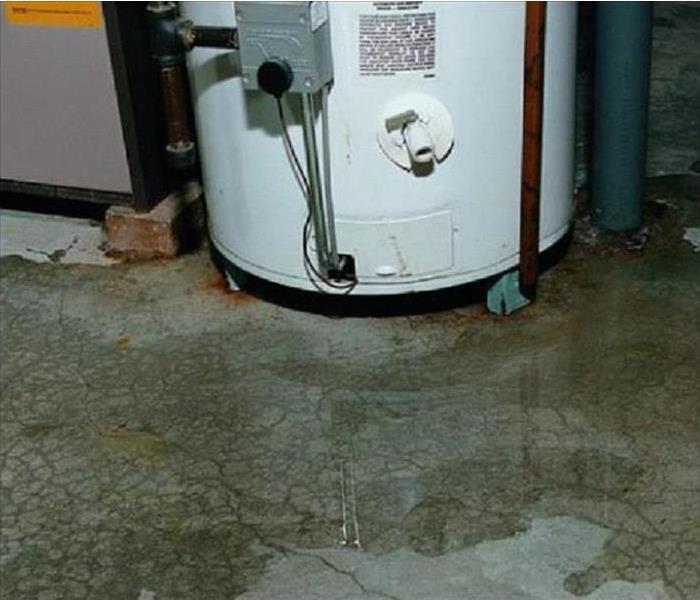 Leaking Hot Water Tank
Leaking Hot Water Tank
Your hot water heater or tank is one of the most vital parts of your home or business. Here are a few tips on what to look for if your hot water heater fails you.
As homeowners, we do not like thinking about things in our homes breaking down. But the reality is that eventually, everything in our home will need to be replaced. There will come a time when things start to not work properly and reach the end of their life. However, regular inspection and maintenance of your home and business systems can help to prevent costly expenses down the road.
One of the most telltale signs you need a new electric hot water heater is that the water will be colder than usual. This may not always mean that the water is necessarily cold. You may notice that the water does not get past a lukewarm temperature. The water may also get colder faster. For instance, you may usually take a fifteen-minute hot shower and have no issues with the temperature of the water changing. Then, you may only be able to take a five-minute shower because the temperature of the water just will not stay warm. This could be true for the faucets or the shower.
The first thing you want to do is check to make sure you do not have any leaks coming from your water heater. If you do find a leak, locate the water shut off to the tank and turn it off. A small leak typically does not affect performance; however, it could lead to other issues such as mold or water damage. One of the most common problems with an electric water heater with a tank, is that the bottom of the tank can rust and break apart. Gallons of water will spill out without warning. Shut off the water supply to the tank and call your local SERVPRO team.
If you don’t have any leaks it could be electrical. There are several key components to your water heater that can fail that will keep you from having hot water at the tap. There are three major parts that can fail that will keep the water from getting hot: the upper element, the lower element, and the thermostat. The elements are metal bars that heat up from the electricity that is fed to the water heater and the thermostat keeps the water temperature heated accurately.
Before you get near your water heater be sure to shut off the electricity and water supply to it. Turn off the power at the breaker box to ensure there is no electricity running through the equipment before any service or trouble shooting is done.
Remember if you have any questions or need water extraction or mitigation, call your SERVPRO of Mayes and Wagoner Counites, 918-486-1055.
Christmas Tree Fire Safety
12/11/2020 (Permalink)
 Don't let your Christmas Tree ruin your holidays.
Don't let your Christmas Tree ruin your holidays.
Tis the season for Christmas trees, decorating and the most home fires of any other time of the year. Christmas trees alone result in 13 million dollars a year in property damage.
With the holiday season celebrations, many Christmas trees, decorations, and ribbons are highly flammable. Here are a few tips from the National Fire Protection Association (NFPA) to keep your family safe and reduce the risk of house fires.
Make sure the Christmas tree is at least three feet away from any heat source (fireplace, radiator, candles, heat vents, or lights).
Make sure the tree is not blocking an exit.
If you have a live tree, add water to your tree daily to keep your tree from drying out.
Replace any string of lights with worn or broken cords or loose bulb connections. Never use lit candles to light up the tree.
Always turn off the lights on the tree before going to bed or leaving.
If you purchase an artificial tree, look for the fire-resistant brands.
Do not let your Holliday season burn out and go up in flames. Remember these few safety tips to help make sure your Holliday season goes as planned and if you have any questions, call your SERVPRO of Mayes and Wagoner Counites, 918-486-1055.
Space Heater Fire Safety
12/11/2020 (Permalink)
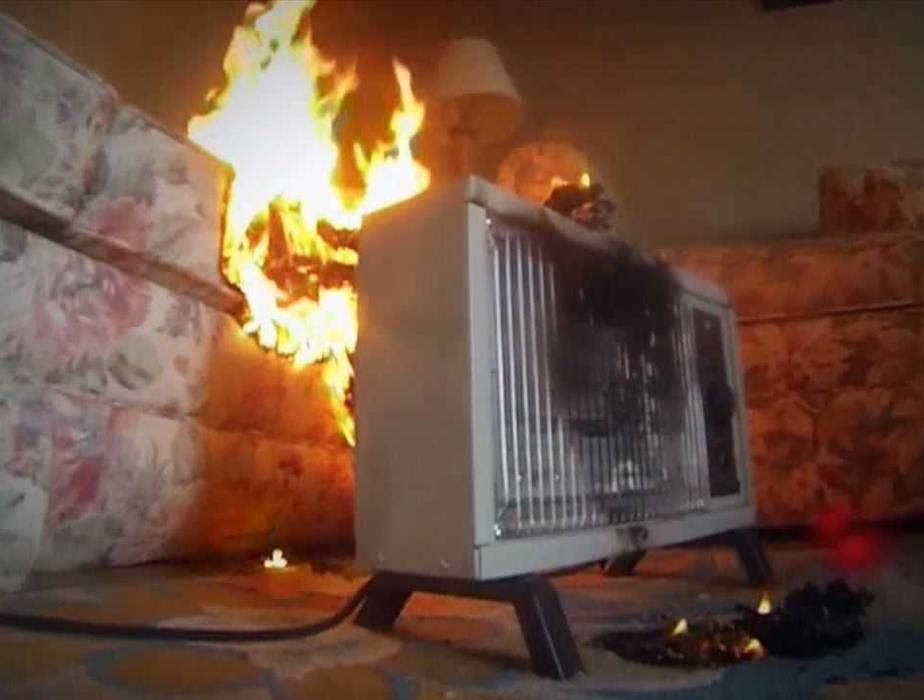 Space Heaters cause 1/3 of the winter home fires in the US every year.
Space Heaters cause 1/3 of the winter home fires in the US every year.
As the temperatures drop, many people turn to space heaters to supplement their heating system or sometimes rely on them entirely for warmth. Unfortunately, space heaters cause about one-third of all winter house fires and 80 percent of all winter heating fire deaths, according to the National Fire Protection Association (NFPA). The winter months of December, January and February are the leading months for home heating fires.
Portable heaters can be both efficient and economical and add direct warmth to the rooms you are using most frequently, however there are few things to keep in mind when using them.
- When shopping for a space heater make sure to buy one that fits your needs. Look for what square footage the heater is suggested for.
- Make sure to buy a heater with overheat protection.
- Look for a heater with “tip over” protection. This feature shuts the space heater off if it accidentally tips over.
- Look for a heater that has a cool touch feature, where if touched by children or pets it will not burn.
- Plug your heater directly into a wall outlet. Never use an extension cord not rated for the heater or “surge protector” outlets. These are the main causes for overheating and electrical fires.
- Avoid using space heaters in humid areas, such as bathrooms or laundry rooms.
- Avoid using space heaters unsupervised and while you’re not at home.
- Do not let children play with or within three feet of space heaters. Left toys are a common cause of fires.
Do not let your Holliday season burn out and go up in flames , educate yourself about the safety hazards that come with the improper use of space heaters will help you achieve better peace of mind as you keep your home warm, comfortable, and fire hazard-free this winter.
SERVPRO specializes in Fire and Water Cleanup and Restoration.
If you have any questions, call your SERVPRO of Mayes and Wagoner Counites, 918-486-1055. 24/7 Emergency Response.
Tips for mold prevention and removal
12/11/2020 (Permalink)
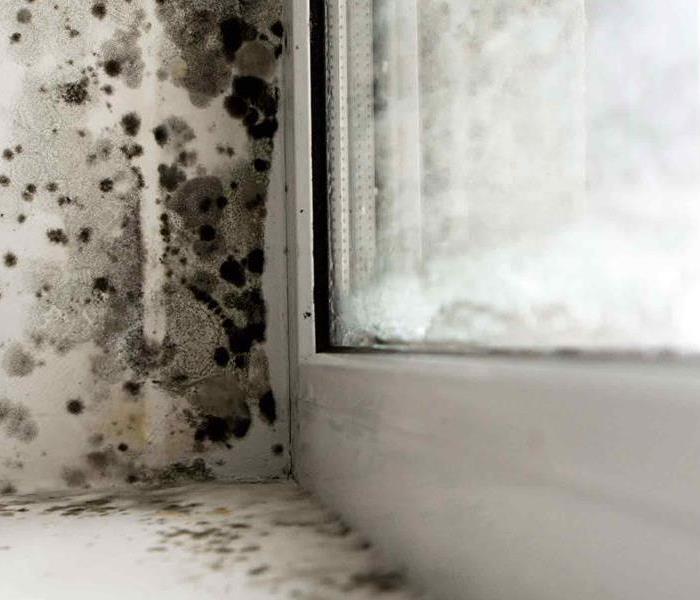 Mold on window seal
Mold on window seal
Molds are quite common in our world, in buildings and homes. Mold will grow in places with a lot of moisture, such as around leaks in roofs, windows, or pipes, or where there has been flooding. Places like Oklahoma are prime areas for mold, as the temperatures fluctuate, causing humidity in our homes and businesses to build up.
Molds thrive on moisture and reproduce by means of tiny, lightweight spores that travel through the air. You're exposed to mold every day in some cases, mold can be good — it's essential in making brie and penicillin, for example. In small amounts, mold spores are usually harmless, but when they land on a damp spot in your home, they can start to grow and it can also be bad, especially when it grows undetected in your home.
Mold grows well on porous materials such as paper products, cardboard, ceiling tiles, sheetrock, and wood products.
Here are some tips to prevent mold from growing in your home or business.
- Identify problem areas in your home and correct them. If you need help identifying problems, contact our SERVPRO team and we can help diagnose the problem areas.
- Dry wet areas immediately.
- Prevent moisture with proper ventilation throughout, under (if you have a crawl space) and in the attic space of your home.
- Equip your home with mold-resistant products.
- Monitor humidity indoors. The ideal relative humidity for health and comfort is somewhere between 30-50% humidity, according to the Mayo Clinic. Indoor thermometers with humidity scale are an inexpensive way to keep an eye on humidity levels.
- Direct water away from your home to keep moisture form collecting under your house.
- Clean or repair roof gutters that may be holding water or allowing water to get under your shingles and seep into your home’s attic.
- Improve air flow in throughout your home.
- Keep mold off household plants.
- Check your HVAC vents for mold, where mold can easily grow. A quick inspection by your local SERVPRO technician can determine if you do have any mold issues. SERVPRO of Mayes and Wagoner Counites can clean your HVAC ductwork.
Remember mold can be dangerous and removal of mold should be done by licensed and trained professionals, such as your SERVPRO of Mayes and Wagoner Counites team.
And there is no one-size-fits-all solution when it comes to mold prevention. Knowing what works for your climate and your home is an important first step. SERVPRO can help to diagnose what action is needed to remove the mold and help future prevention.
If you have any questions, call your SERVPRO of Mayes and Wagoner Counites, 918-486-1055. 24/7 Emergency Response.
A Lesson On Dry Sponges
5/8/2020 (Permalink)
Soot from fire damage cannot be cleaned with just water. SERVPRO uses a special dry sponge on surfaces like drywall. It is made of a natural rubber and used like an eraser.
Once the surface of the sponge is dirty, it must be discarded and cannot be cleaned or reused. The sponges are very porous and hold a remarkable amount of soot. After wiping soot off the surface, then it can be washed.
There is no substitute for training and experience. As fire and water damage specialists, our business is built upon fire and water restoration expertise. We have the knowledge and the specialized equipment to get your property back “Like it never even happened.”
If you have questions about fire, smoke or soot damage, call SERVPRO of Mayes & Wagoner Counties at (918)486-1055.
Hygiene Tips on COVID-19
5/7/2020 (Permalink)
Across the nation and the world as a whole, the Coronavirus is the top headline. If you haven’t been paying attention to the news, many events are being cancelled around the nation because of this outbreak.
During this time, it is extremely important to maintain extra vigilant personal hygiene and safety precautions. Here are some helpful tips to follow:
- Frequently wash your hands with soap and water for at least 20 seconds. When soap and running water are unavailable, use an alcohol-based sanitizer with at least 60% alcohol.
- Avoid touching your eyes, nose, or mouth with unwashed hands.
- Cover your cough or sneeze with a tissue, then throw the tissue in the trash.
- Clean and disinfect frequently touched objects and surfaces using a regular household cleaning spray or wipe.
- Stay home when you have a fever or present a risk of spreading illness to others.
- Maintain a proper social distance between people (3 feet).
- Shaking hands and other forms of social greeting that creates contact with other people is discouraged during this period.
Our team hopes that these tips were helpful and that everyone will stay safe in such a crisis and take the proper precautions to remain healthy.
Types of Fires
5/6/2020 (Permalink)
Many people don't know this but there are different types of smoke.
There are two different types of smoke–wet and dry. As a result, there are different types of soot residue after a fire. Before restoration begins, SERVPRO of Mayes and Wagoner Counties will test the soot to determine which type of smoke damage occurred. The cleaning procedures will then be based on the information identified during pretesting. Here is some additional information:
Wet Smoke – Plastic and Rubber
- Low heat, smoldering, pungent odor, sticky, smeary. Smoke webs are more difficult to clean.
Dry Smoke – Paper and Wood
- Fast burning, high temperatures, heat rises therefore smoke rises.
Protein Fire Residue – Produced by evaporation of material rather than from a fire
- Virtually invisible, discolors paints and varnishes, extreme pungent odor.
SERVPRO: For All of Your Restoration Needs!
5/5/2020 (Permalink)
SERVPRO of Mayes & Wagoner Counties should always be your primary choice for any of your restoration services; from water and fire restoration, to mold mitigation, to duct cleaning — you name it — we do it all!
Not only that, but we are available 24/7 for any and all of your needs. We are there when you need us, especially during odd hours and times when you would need us most.
There is no flood too small, and no fire loss too large for us to handle; we tackle each job with a steadfast commitment to complete our goals on time, professionally, and with the utmost care.
Don't believe us? Check out our Google and Facebook reviews — we take great pride in being able to provide quality service to our residents.
If you ever need a restoration company you can count on, you know who to call...
SERVPRO of Mayes & Wagoner Counties!
Untreated Water Damage Leads to Mold Growth
4/30/2020 (Permalink)
When water damage is left untreated, mold growth quickly occurs. Contact SERVPRO of Mayes & Wagoner Counties at the first sign of water damage.
If you have ever been curious about where a certain odor was coming from and almost went crazy looking for the source, there is a chance it could have been caused by water damage. But how does water damage cause such foul smells, and what can you do about them? SERVPRO of Mayes & Wagoner Counties provides restoration services and has experience in dealing with this kind of issue.
Although it often starts out as just a nuisance, water damage can worsen over time. Seeping water can lead to the growth of mold and mildew, which is when foul odors start to emerge. Water triggers mold to release spores, creating a sickening stench. Odors can also be a result of other contaminants. For instance, when a sewer backs up, the resulting smell comes from the sewage that is inside your home.
So, what can you do about it? Well, this is one mess you definitely should not try to clean up yourself: Water damage always calls for a professional touch. Additionally, if there is any form of sewage present, you will need professional sewage cleanup services to remove all the hazardous and toxic materials. The same is true for mold cleanup. And remember: It is important to call an expert right away. Whether you just noticed a leak or your home recently sustained a flood, now is the time to contact a specialist. If you wait too long, the damage could become more expensive to repair and may even harm your health.
If you have water damage and need a crew that can handle large cleanups with ease, get in touch with SERVPRO of Mayes & Wagoner Counties. Their friendly staff can help with all types of damage done to your home. To find out more about the services they offer, call (918)486-1055.
Thunderstorm Preparedness in Oklahoma
1/31/2020 (Permalink)
Thunderstorms are beautiful, but they can also be dangerous. They can cause severe damage to your home and property in Oklahoma. Thunderstorms include lightning and can:
- Include winds over 50 MPH
- Create hail
- Cause flash floods
- Cause tornadoes
In most places, a thunderstorm can happen at any time of the year and at any time of the day.
SERVPRO® of Mayes & Wagoner Counties knows you cannot prevent a thunderstorm, but you can prepare:
- Know the risk for thunderstorms in Oklahoma
- Sign up for your community’s warning system
- Cut down or trim trees that may fall on your home or office
- Install surge protectors, lightning rods, or a lightning protection system
SERVPRO of Mayes & Wagoner Counties repeats the warning, “When thunder roars, go indoors.” You don’t have to wait for the thunder. If there is a thunderstorm warning, go inside. Once there:
- Unplug appliances
- Do not use landline phones in office or home
- Pay attention to alerts and warnings
If you can’t get inside a building:
- If you are swimming or in a boat, get to land immediately. Find shelter
- If you are in a car, don’t touch anything metal
- “Turn around. Don’t Drown. '' Avoid flooded roads. 6 inches of moving water can knock you down. One foot of moving water can sweep away your car.
A lightning strike during a thunderstorm can leave a wake of destruction in its path. This can range from minor electrical issues to fire damage. Lightning is also a major cause of injury or death from weather-related dangers. Most people survive being hit by lightning, but they often have long-term problems.
SERVPRO of Mayes & Wagoner Counties is independently owned and operated.
Our New Year's Resolution
1/13/2020 (Permalink)
3, 2, 1.... NO!!!!
New Years is always full of fun and exciting times. The best part of New Years is setting your “New Year's Resolution”. Here at SERVPRO of Mayes & Wagoner Counties, we have a resolution of our own. Our resolution is to educate more people about how we do what we do. So, here is a countdown of some of the things that make SERVPRO your go to for any type or size of water loss.
5: We provide 24-hour service every day of the year, including holidays, so we are always prepared for when you need us the most.
4: Our team is highly trained in water mitigation.
3: For every job we get called into, we have a policy. The 1-4-8 Policy. Our goal is within one hour, a representative will make initial contact with you and set up a time to be there. We have 4 hours to be on site at your disaster- big or small. We have 8 hours to brief the team and get started on getting your home or business back "Like it never even happened."
2: Our advanced equipment helps to detect hidden moisture, extract the standing water quickly, and thoroughly clean and dry your home and belongings.
1: A trusted leader in the Restoration Industry with over 1,700 Franchises.
Here at SERVPRO of Mayes & Wagoner Counties, we pride ourselves on being the best at what we do. From the moment we get the call, our objective is to give our customer the best results. We provide a nice and friendly experience to go along with the hard work that we put into each and every job. Make it your New Year’s Resolution to use SERVPRO of Mayes & Wagoner Counties in your time of need and we will do our best not to disappoint.
Space Heater Safety
12/9/2019 (Permalink)
With the cost and hassle of replacing central heat, a lot of people are using more space heaters. These heaters can lower your energy bills by adding direct warmth to the rooms you use more frequently. But while these portable heaters can be both efficient and economical, there are a few things you need to keep in mind when putting one in your home.
When shopping for a space heater make sure to buy one that fits your needs. Buying a larger heater for a smaller area can cause your utility bills to be higher. A small heater being used to cover a larger area will cause it to work harder. Make sure to buy a heater with overheat protection.
Room heaters with overheat protection switches function by using a temperature sensor to detect when internal components become too hot. When an unsafe temperature is detected, the switch automatically shuts off the unit to prevent overheating. Most new space heater also offer tip over protection. This feature shuts the space heater off if it accidentally tips over. Another great feature is the cool-touch feature where the exterior part of the heater is safe to touch for houses with children or pets.
One good rule is to always plug a space heater directly into an outlet. Plugging directly into an outlet helps prevent over heating. Plugging into an extension cord can cause fires, overheating, or a chance of electrical shock. Remember that if you do have to plug into an extension cord use one that is rated for the size of the space heater.
Stay away from using space heaters in humid areas and bathrooms. To avoid shock do not touch a space heater with wet hands or any type of water. Remember to always shut off your heater when leaving the area. Some heaters have automatic timers that shut off for you, but leaving a heater on and unsupervised can be very costly and dangerous.
Educating yourself about the safety hazards that come with the improper use of portable heaters will help you achieve better peace of mind as you keep your home warm, comfortable, and fire hazard-free this winter.
Christmas Tree Fire Safety
12/8/2019 (Permalink)
Don’t let Christmas ever heat up too much — with fire that is. Christmas trees alone result in 13 million dollars a year in property damage. More importantly, these fires can be dangerous to your family and friends. Tree dryness, electrical malfunctions, and poor location can be a deadly combination when showcasing a live tree in your home.
Here are some safety tips for your tree to help unwanted surprises during the Hollidays.
-Keep the bases of the tree well watered to prevent it from drying out.
-Keep away from heat sources such as heaters, fireplaces, or light sources such as candles.
-Fresh trees are less likely to catch fire, so look for a tree with vibrant green needles that are hard to pluck and don’t break easily from its branches.
-Do not forget to turn the Christmas lights on the tree out at night.
-Be sure to plug your lights into a ground-fault circuit interrupter protected receptacle.
Don’t let your Holliday season burn out and go up in flames. Remember these few safety tips to help make sure your Holliday season goes as planned.






 24/7 Emergency Service
24/7 Emergency Service






























